

Make Your Streams Stand Out

Stream up to eight programs at once, each with four outputs for a total of 32 streams. Full suite of stream-specific audio processing tools. Optimize performance of audio content.

AAC, MP3 and Opus encoders. Reaching a broad range of end user devices and players.

Metadata agnostic. Lua transformation filters adapt metadata input from any automation system into any required output format.
Cloud-ready for the future, yet compatible with standard CDN and streaming platforms now. Supports HLS, Icecast, RTMP, and RTP streams.
All-inclusive Linux and AoIP appliance. No Windows® drivers, updates or PC needed. Add Streamblade to any audio network via WheatNet-IP, analog, AES3, or AES67 inputs or add Wheatstream to any existing WheatNet-IP or AES67 compatible networks.

wheatstone.com/stream-rw21a


Radio heads west
To the West Hall, that is! NAB Show technical sessions will explore hybrid radio, advanced FM HD service modes, AM proofs and more.

Radio over ATSC 3
ONE Media says 40 to 50 audio channels could fit into a small slice of a NextGen station’s bandwidth.
Monitoring


Future’s 2022 B2B Publication of the Year
Vol.
|
FOLLOW US
www.twitter.com/radioworld_news
www.facebook.com/RadioWorldMagazine
CONTENT
Managing Director, Content & Editor in Chief Paul J. McLane, paul.mclane@futurenet.com, 845-414-6105
Content Producer & SmartBrief Editor Elle Kehres, elle.kehres@futurenet.com
Technical Advisors Thomas R. McGinley, Doug Irwin
Technical Editor, RW Engineering Extra W.C. “Cris” Alexander
Contributors: Susan Ashworth, David Bialik, John Bisset, Edwin Bukont, James Careless, Ken Deutsch, Mark Durenberger, Charles Fitch, Donna Halper, Alan Jurison, Paul Kaminski, John Kean, Larry Langford, Mark Lapidus, Michael LeClair, Frank McCoy, Jim Peck, Mark Persons, Stephen M. Poole, James O’Neal, T. Carter Ross, John Schneider, Dan Slentz, Dennis Sloatman, Randy Stine, Tom Vernon, Jennifer Waits, Steve Walker, Chris Wygal
Production Manager Nicole Schilling
Group Art Director Nicole Cobban
Senior Design Director Lisa McIntosh
Senior Art Editor Will Shum
ADVERTISING SALES
Senior Business Director & Publisher, Radio World John Casey, john.casey@futurenet.com, 845-678-3839
Publisher, Radio World International
Raffaella Calabrese, raffaella.calabrese@futurenet.com, +39-320-891-1938
SUBSCRIBER CUSTOMER SERVICE
To subscribe, change your address, or check on your current account status, go to www.radioworld.com and click on Subscribe, email futureplc@computerfulfillment.com, call 888-266-5828, or write P.O. Box 1051, Lowell, MA 01853. Licensing/Reprints/Permissions
Radio World is available for licensing. Contact the Licensing team to discuss partnership opportunities. Head of Print Licensing Rachel Shaw licensing@futurenet.com
MANAGEMENT
SVP Wealth, B2B and Events Sarah Rees
Chief Revenue Officer, B2B Walt Phillips
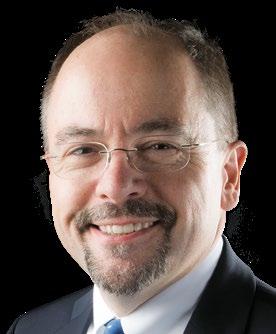
Managing Director, B2B Tech & Entertainment Brands Carmel King
Vice President, Sales, B2B Tech Group Adam Goldstein
Head of Production US & UK Mark Constance
Head of Design Rodney Dive
FUTURE US, INC.
Future US LLC, 130 West 42nd Street, 7th Floor, New York, NY 10036
All contents ©Future US, Inc. or published under licence. All rights reserved. No part of this magazine may be used, stored, transmitted or reproduced in any way without the prior written permission of the publisher. Future Publishing Limited (company number 02008885) is registered in England and Wales. Registered office: Quay House, The Ambury, Bath BA1 1UA. All information contained in this publication is for information only and is, as far as we are aware, correct at the time of going to press. Future cannot accept any responsibility for errors or inaccuracies in such information. You are advised to contact manufacturers and retailers directly with regard to the price of products/services referred to in this publication. Apps and websites mentioned in this publication are not under our control. We are not responsible for their contents or any other changes or updates to them. This magazine is fully independent and not affiliated in any way with the companies mentioned herein.
If you submit material to us, you warrant that you own the material and/or have the necessary rights/ permissions to supply the material and you automatically grant Future and its licensees a licence to publish your submission in whole or in part in any/all issues and/or editions of publications, in any format published worldwide and on associated websites, social media channels and associated products. Any material you submit is sent at your own risk and, although every care is taken, neither Future nor its employees, agents, subcontractors or licensees shall be liable for loss or damage. We assume all unsolicited material is for publication unless otherwise stated, and reserve the right to edit, amend, adapt all submissions.
Radio World (ISSN: 0274-8541) is published bi-weekly with additional issues in February, April, June, August, October and December by Future US, Inc., 130 West 42nd Street, 7th Floor, New York, NY 10036. Phone: (978) 667-0352. Periodicals postage rates are paid at New York, NY and additional mailing offices.
Catch you in Vegas
NAB Show continues to grow its way back
I
Paul McLane Editor in Chief
That also goes for the NUG@ NAB Radio Technology Forum, hosted by Nautel at the Flamingo on Sunday morning April 16.
The good folks at Nautel have once again invited me to help kick off their NUG meeting with a presentation previewing the themes and products of the convention. The company reliably puts on a program of industry tech experts, suppliers and Nautel’s own personnel, discussing transmission best practices and sharing technology tips.
Sign up at www.nautel.com/nab/nug-registration/. The event is free, and it’s not just for Nautel users; anyone in the industry who is passionate about transmission is welcome.
This issue of Radio World includes a sampling of technology topics to be discussed at the NAB’s Broadcast Engineering and IT Conference. The tech sessions will be held this year in the new West Hall, home to a newly anointed Broadcast District. And West is also where you’ll now find a preponderance of radio-related exhibitors (though other halls, notably Central, include familiar names too).
I’m expecting more people will attend the convention than last year, as the spring event continues to work its way back from the pandemic. I hope to see you there. In our next issue, watch for our feature on Mike Cooney, the 2023 recipient of the NAB Radio Engineering Achievement Award.

THIS ISSUE NEWS
4 Newswatch
f you spot me roaming the booths or sessions at the centennial NAB Show, be sure to grab me to say hello.5 Ford and Volvo are dropping AM from cars
12 ONE Media moves forward with “radio over ATSC 3”
16 Newswatch
FEATURES
18 Workbench: Trust, but verify with your oscilloscope!
37 Fathom applies AI to podcast listening
40 Security considerations with cloud infrastructure
42 ChaptGPT didn’t write this NAB SHOW
22 For hybrid radio, “it’s all about the metadata”
28 Paul Shulins goes on a Stellar road trip
32 HD Radio advanced FM service modes in spotlight
34 Modernizing NRSC AM proof measurements
36 Here are more tech sessions of interest
OPINION
45 Readers’ Forum
Newswatch Groups Differ on Ownership Caps





Townsquare Media, Connoisseur Media and Midwest Communications believe that the FCC’s decades-old local ownership rules hinder the ability of broadcasters to compete for audience and advertisers. They’ve asked the FCC to do away with subcaps in all but the largest markets.


By contrast, iHeartMedia recommends a “targeted, moderate approach.” It worries that a proposal from the NAB — to abolish AM caps entirely and raise FM limits — “could exacerbate the competitive disadvantage experienced by AM radio stations relative to FM radio stations.”





Comments by these companies came as the commission conducts its latest review of media ownership rules, even though, as we’ve reported, it still hasn’t finished the previous one.
In a quadrennial review, the commission is supposed to assess whether its rules continue to serve the public interest in light of the current media marketplace.
For radio, at the center of discussion is whether the FCC will keep its rules or raise the limits on how many stations a broadcaster can own in a market.

In each of the largest Nielsen markets, a licensee can own up to eight radio stations, but a subcap limits a licensee to owning no more than five in either the AM or FM service in a given market.

iHeart is asking the commission to eliminate all ownership limits on AM stations but retain the current local ownership restrictions on FMs. “This moderate, targeted reform would help ensure that AM radio stations continue to provide the indispensable public interest services upon which tens of millions of American consumers rely,” the big company told the FCC.

Townsquare, Connoisseur and Midwest, filing jointly, argue that OTA broadcasters need the ability to form larger local clusters. “Only by increasing their reach in their local markets can local broadcasters be able to keep up with changing audience attitudes and compete with big tech for advertising dollars.

“It is time to move away from the 1996 rules designed for a market and audience that looked and behaved very differently.”

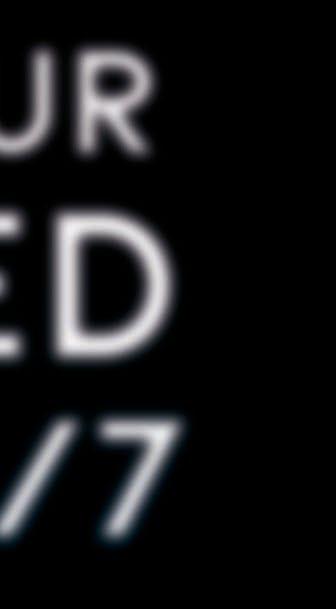

Ford and Volvo are dropping AM from cars
It’s becoming clear that AM broadcast reception is under mortal assault in the United States — and not just in electric vehicles.
In mid-March, news broke that the 2024 version of the popular Ford Mustang will not include AM reception. Then a Ford spokesperson told news site Ars Technica that Ford drivers will still be able to access AM stations via internet “as we remove amplitude modulation — the definition of AM in this case — from most new and updated models we bring to market.”

The Ford news broke shortly after Sen. Ed Markey released letters he received from major carmakers about their intentions for AM radio.
Volvo told Markey, “Our decision to not support AM radio was primarily linked to our electrification strategy” and said it has “no plans for AM antennae in the future.”
The fact that Ford and Volvo
appear to be dropping AM from all vehicles, not just EVs, shows how dramatically AM’s place in the dashboard has eroded.
The rest of the letters suggest an outlook for AM in cars that is, to put it generously, patchy. Some carmakers described specific steps they’ve taken to regain AM radio in their EVs, at least for now. Several sounded somewhat reassuring and expressed a willingness to collaborate with Markey, while others seemed more stand-offish. Companies that make only EVs seemed to dance around the subject and didn’t answer Markey’s questions directly.
Most of the respondents seemed to indicate that FM radio is firmly entrenched in their current suites of offerings. Many also offer HD Radio. But none expressed any long-term commitment to AM, FM or any other particular feature, seeming to want to leave their options open. And it’s

clear that the risk to AM extends beyond EVs to all vehicles.
What follows is a sample of the responses.
“Poor reception quality”
Volvo’s letter indicated that it has dropped AM in vehicles of all types.
“Our decision to not support AM radio was primarily linked to our electrification strategy. If Volvo cars had continued to provide AM radio, our BEV [Battery Electric Vehicle] and PHEV [Plug-in Hybrid Electric Vehicle] models likely would have experienced EMC [electromagnetic compatibility] disturbances and this could result in poor performance,” Volvo said. It added that it has “no plans for AM antennae in the future.”
Polestar, a luxury performance brand owned by Volvo, does not have AM broadcast radio in its current vehicles. “Polestar 2 and Polestar 3 do not offer AM radio, and have been this way since launch,” it
told Markey.
Mazda’s first ever electric vehicle to market, which shipped in 2022, does not have AM, according to the company.
“Support for AM radio in the 2022 MX-30 for all markets was dropped due to poor reception quality caused by electromagnetic inference from the MX-30’s battery powered motor and electronics,” Mazda wrote. It said a decision has not yet been made regarding the ability to receive AM broadcasts from future vehicles.
inside vehicles,” Volkswagen wrote. The German automaker does not include AM radio in its EVs. Its engineers have investigated hardware and software methods to reduce the interference, but the solutions did not meet their requirements.
“The challenge of AM radio interference and static already exists in ICE [internal combustion engines], but the problem is significantly exacerbated in EVs.” Volkswagen noted that metallic shielding, filtering
For instance, next-generation infotainment systems will locate AM and FM receiver components farther from EV components, which may help improve AM reception, including in BEVs.”
Stellantis acknowledged that auto manufacturers face questions about the AM noise issue, adding that the technical and economic challenges may vary by vehicle.
Nissan, Honda, Hyundai and Mitsubishi Motors wrote that they use noise reduction measures when necessary in order to limit electromagnetic interference in new EVs.
A few automakers told Markey they haven’t used special technology to address EMI, though “it does cause substantial challenges in terms of packaging and antenna location,” according to Jaguar Land Rover North America.
The Mazda EV was developed for three key markets — Japan, Europe and North America. The company noted that in Europe, analog AM radio broadcasts have been replaced by DAB. In Japan, Mazda says, all AM stations are simulcast on FM.
“In North America, many AM broadcasters have made their content available via compatible smartphone apps, which can be used via Apple CarPlay and Android Auto in the MX-30,” Mazda wrote, a theme that was echoed by other companies.
Several of the companies referred to AM’s problems with noise and interference.
“AM signals are highly susceptible to interference from all types of electrical sources, not only from components
and other measures could help but would have “a substantial impact on an EV’s range and performance due to the added weight.” (The company also mentioned that it reviews its strategy for terrestrial radio and streaming “on a yearly basis.”)
But other car manufacturers said they take extra precautions to protect AM reception in their EVs.
Stellantis, parent of familiar brands like Chrysler, Fiat and Dodge, said its plans are confidential but described steps it has taken to keep AM in its electric offerings. “To help protect the AM radio band from noise and interference, our company has, for example, used shielded high-voltage cables and connectors; we have also established various requirements that all electrical components in the vehicle must meet.
“Additionally, Stellantis is implementing preventive design measures for future vehicles.
Kia told Markey it has no plans to discontinue AM or FM in future models sold in the U.S., whether EVs or gas-powered vehicles. “Finally, we are not aware of issues with electromagnetic interference with AM radio signals from our EVs.”
Many of the companies said they offer HD Radio, and several of the responses mention the benefits in reducing interference. Xperi, the developer of HD Radio, says digital in-band, on-channel modulation provides a significant level of noise immunity from electromagnets that produce harmonics harmful to analog AM transmission and reception.

One company’s response was signed by a technical executive. Adam McNeill, VP of engineering in the U.S. at BMW, said its EV and PHEV models no longer include AM broadcast radios and explained why:
“BMW made the decision to not include analog AM radio broadcasting in its EV and EV hybrid models beginning with the BMW I3 in 2014 primarily for two reasons:
1) electromagnetic interference creates poor analog AM radio
“
The alternate technologies we’ve mentioned enable a transition from broadcast AM radio without sacrificing the safety of our consumers.

Radio in Cars
reception quality and 2) technological innovation has afforded consumers many additional options to receive the same or similar information.”
BMW noted that many AM stations in the United States now have FM translators. “BMW offers free digital FM broadcasting, through which many radio stations simulcast their AM radio programming,” McNeill wrote.
BMW was among the companies that pointed Markey to the response from the Alliance for Automotive Innovation. That letter made no mention of keeping AM in cars but replied to Markey’s concerns about public warning by describing the many ways Americans can receive emergency alerts and other public warning.
The consortium even quoted FEMA’s IPAWS Program Management Office strategic plan as stating: “The public is moving away from radio and broadcast/cable television as the primary channels for news and information.”
“Severe disruption”
Unsurprisingly, carmakers that make only EVs, like Tesla, Rivian and Lucid, seemed dismissive of AM or avoided answering the Markey questions directly.
Tesla said its testing of AM in its EVs caused severe disruption to AM radio transmission that makes the signal reception unstable and unusable. The company says it has developed “a comprehensive suite of in-vehicle media capabilities to ensure every Tesla owner can personalize their drive to their preferences.”
That includes the TuneIn streaming app. “Tesla identified TuneIn as an alternative streaming application to provide Tesla owners with access to their preferred local AM radio stations and thousands of additional global stations. Through TuneIn, Tesla owners are able to stay current on their preferred local AM radio shows and broadcasts, ensuring
access to the full range of radio programming,” Tesla told Markey. (The company also mentioned that it had provided virtual briefings for Markey’s staff in September and October of last year.)
Rivian’s line of electric trucks and SUVs do not include over-the-air AM reception. It wrote: “AM radio service from local and national stations is provided via digital radio platforms,” which appears to refer to internet streams from a modem in their R1T and R1S models.
Meanwhile Lucid didn’t answer most of Markey’s questions and focused instead on promoting the brand’s effort to “create sustainable mobility without compromise in cars that are intuitive, liberating, safe and designed for all the ways people get around.” It did say the Lucid Air sedan “offers consumer-friendly features, including free, digital AM/ FM/HD/DAB+ radio and is designed to minimize electromagnetic interference,” but it gave few other details.
The Lucid letter and most of the others appear to be cautiously worded and in most cases were signed by government affairs and policy departments. In fact, some read more like marketing pieces with brand messaging and statements of their commitment to being environmentally responsible.
“No plans to discontinue”
One of Markey’s core questions was whether each company had any plans to omit free broadcast AM or FM from any future vehicles.
Hyundai wrote, “We have no plans to discontinue either of these [AM or FM] in future vehicles.” Jaguar said, “We currently do not have any plans to discontinue AM and/or FM from future vehicle models.”
Mitsubishi wrote, “No, we do not have plans to omit AM and/or FM broadcast radio.” Nissan said, “Currently, all Nissan and Infiniti branded vehicles sold in the U.S. are equipped with AM/FM radio. At
The Not-So-Great 8
Sen. Ed Markey criticized the eight car companies — BMW, Ford, Mazda, Polestar, Rivian, Tesla, Volkswagen and Volvo — that told him they have removed AM radio from EVs.
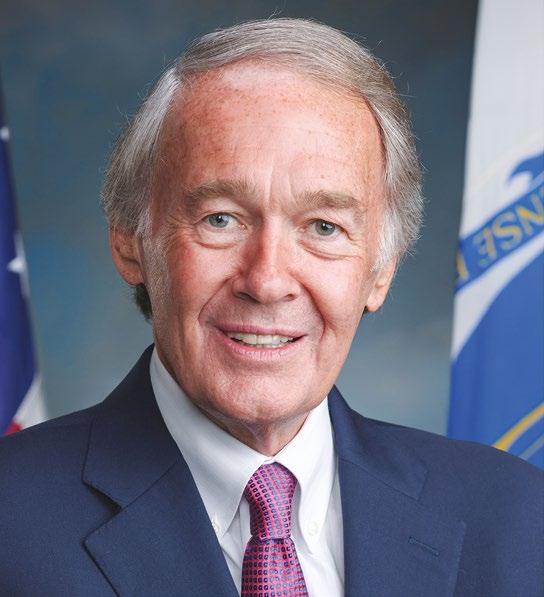
You could almost feel the electricity in his reply. He said those eight “have undermined the Federal Emergency Management Agency’s system for delivering critical public safety information to the public.”
He said Mercedes-Benz and General Motors “refused to provide individual responses” and relied on a letter from the Alliance for Automotive Innovation.
Ten automakers — Honda, Hyundai, Jaguar/Land Rover, Kia, Lucid, Mitsubishi, Nissan, Stellantis, Subaru and Toyota — “still maintain access to broadcast AM radio in their vehicles.”
Markey reacted by saying that “far too many automakers are ignoring the critical safety benefits of AM radio.” He said that although many automakers named other media including internet radio as replacements for AM, “in an emergency, drivers might not have access to the internet and could miss critical safety information. The truth is that broadcast AM radio is irreplaceable.”

INSIDER
What’s Inside?
Pg:1 New MPX I and MPX II Codecs Unveiled
Pg:2 HTTP Streaming and More Input Processing in ViA, FREE MaxxKonnect Data & CCC Promotion

Pg:3 MyBridge Radio Network Deploys Gateways for STLs Pg:4 Native Livewire+ Integration is Complete, Win $1,000
New MPX I and MPX II Codecs Unveiled at NAB2023
Flexible FM-MPX and µMPX Transport Solutions
At NAB2023 Tieline will reveal two new MPX codecs delivering unique composite FM multiplex (MPX) codec solutions for real-time network distribution of FM-MPX or MicroMPX* (µMPX) signals to transmitter sites. The MPX I is ideal


for transmitting a composite STL signal from a single station with return monitoring, whereas the Tieline MPX II can transport two discrete composite FM-MPX signals from the studio to transmitters with return monitoring. Both units support analog MPX on BNC, MPX over AES192, and multipoint signal distribution, to deliver a wide range of flexible composite encoder and decoder solutions for different applications.
The MPX I and MPX II support sending the full uncompressed FM signal, or high quality compressed µMPX at much lower bit-rates. You can order an optional DVB-S2 satellite tuner card at purchase to support decoding DVB-S or DVB-S2 signals.

Benefits of Tieline MPX Solutions

Sending transmission-ready FM composite signals from the studio allows broadcasters to maintain audio processing and RDS data insertion at the studio. This
significantly reduces capital and operational costs by eliminating processing equipment from transmitter sites, which reduces on-site power consumption, wiring and space requirements, as well as site visits for service and support. Composite MPX over IP signals can be easily replicated and distributed using multicast and multi-unicast^ technologies and take advantage of rock solid redundancy features like redundant streaming, RIST, FEC, and automated SD card file failover.
MPX Composite Distribution
Distribution of MPX composite signals from the studio or playout center substantially reduces costs
(Continued on Page 2)
by eliminating expensive audio processing and RDS generation requirements at STL sites. Multipoint distribution via multicast or multi-unicast technologies reduces costs even further, by affordably replicating MPX composite streams using a single MPX I or MPX II encoder, similar to how baseband IP audio streams are replicated in audio codecs. Compressed µMPX
composite signals can be distributed over WANs like the internet at bitrates as low as 320kbps to reduce bandwidth requirements.
Visit Tieline booth #C3008 at NAB2023 to see Tieline’s MPX options firsthand.
*Optional Feature; ^ Not in First Release
HTTP Streaming and More Input Processing in ViA…

The ViA is widely recognised as the world’s most popular remote codec and Tieline is adding new features to deliver software and streaming enhancements of great benefit to broadcasters for live remotes.
HTTP Streaming
New firmware will provide support for HTTP streaming using Shoutcast or Icecast in the ViA. This means broadcasters can connect directly to a codec at the studio and also simultaneously transmit an Icecast or Shoutcast stream to a compatible server in support of online radio streaming workflows.


More Input Processing Options…
The ViA already includes input processing features such as compression and EQ, but perhaps you have found yourself at a location wishing you could
add a noise gate across the codec inputs to remove unwelcome background noise in certain situations? Well, an upcoming firmware release will include input channel noise gates as well as an expander, to deliver more input processing options in the ViA.

The new release will be available in the first half of 2023 as a free firmware upgrade.
6 Month MaxxKonnect Data Plan & Cloud Codec Controller FREE!
Purchase a Tieline ViA & Dual Active SIM Cellular Module from The MaxxKonnect Group and you will receive a 6-month MaxxKonnect prioritized, high speed LTE internet data plan for FREE! Plus, Tieline will include a 6-month Cloud Codec Controller subscription for FREE. So now you can get the industry’s favorite remote codec with a secure, prioritized data plan,
NAB Show Special
plus full remote control with the Cloud Codec Controller, delivering the ultimate remote broadcasting package. Visit the Tieline or MaxxKonnect booths at NAB to get your badge scanned.
MyBridge Radio Network Deploys Gateways for STLs
 By Jeff Heins, Chief Engineer, MyBridge Radio Network
By Jeff Heins, Chief Engineer, MyBridge Radio Network

Since September 2012, I have been the engineer/tech/ IT person for the MyBridge Radio Network overseeing 2 studio locations, 8 full power FMs, a directional AM daytimer, and 11 translators across Nebraska, and soon another AM with an FM translator. We launched a new Spanish format in 2021 on our first AM and a couple of the translators. We also were granted new permits during the FCC NCE window, to expand our reach into both the Hispanic and English audiences in Nebraska with 7 licenses approved.
With two networks scattered over 500 miles from endto-end, 900Mhz STLs are out. KU band satellite has a high price of entry and monthly cost. We’re also in the Midwest – it snows here – and dishes lose signal because of it. Those sites aren’t easy to get to in the snow and ice. IP delivery has become much more reliable, and at a lower overall cost.
Connection reliability is everything. At the tower, I don’t need a bunch of bandwidth. I just need the connection to be there all the time, and not take hundreds of milliseconds to get there. Until recently we had deployed 10 pairs of point-to-point Tieline BridgeITs, but we recently purchased 2 Tieline Gateway 16 channel codecs to facilitate our expanding network.
Each Gateway will feed 8 stereo connections to our full power stations and translators. Currently 5 are onthe-air from one of the Gateways. As we are an Axia Livewire facility, and the Gateway natively supports Livewire+, once we work through automation reconfiguration for our local and regional breakaways, the second Gateway will replace 8 Bridge-ITs at the studio which are currently fed audio by xNodes. The Bridge-ITs will be repurposed as tower site codecs for our newly acquired licenses.
At the studio we use two independent fiber providers, each following a different path to our facility. We’ve also added redundant providers at our tower sites. In some cases that meant building a private wireless IP link into town where another provider was available; others necessitated cellular data links as backup.
On the codec side, we looked for the ability to handle

multiple ISP connections, both at the studio and transmitter sites and handle ISP’s that have metered data. Plus, we needed a way to interface with our automation so we could simulcast across some or all of the remote stations, regionally feed several stations, and even program them independently from the rest of the network. And be reliable! All codecs either establish the tower connections using SmartStream PLUS redundant streaming using two different ISP connections, or if the tower site has a metered connection, the remote site connects back to the studio, with the remote router handling failover if the primary ISP goes down.
We also use a pair of Bridge-ITs between studio locations, with one of the members of our Morning Conversation participating from halfway across the state. Another Bridge-IT at the studio facilitates Report-IT and remote broadcast connections.
With Gateway and Bridge-IT codecs configuration is intuitive and they just work. I’m the one doing the configuration and STL side of things – and for my staff they find them very easy to operate. We love the Tieline Toolbox GUI and it’s nice to have some front panel indicators and control, even if we never have
(Continued on Page 4)
to push any of the buttons after initial install. We use Tieline’s auto jitter settings with AAC encoding at the highest connection the link can handle. The codecs are very reliable and we have had no issues that couldn’t be traced to a network/ISP issue. We don’t like to just
look at the lowest price tag at time of purchase, but also what the long-term costs are. Our experience with Tieline IP codecs for over 15 years, and a good reputation among other engineers, all figure into that overall cost.


Tieline’s Native Livewire+ Integration is Complete…

We’ve been talking about it for several months and many talented people in the broadcast engineering community asked for it. Now the full integration of native Livewire in Tieline’s award winning Gateway codec is complete!
For over a decade Tieline has been assisting broadcasters bridge the audio gap between facilities regardless of whether the plant was Wheatnet-IP (AoIP), analog, or digital AES3. When we launched the Gateway, we expanded the AoIP capability by adding support for additional AoIP protocols like AES67, SMPTE 2110-30, and RAVENNA. In the last year, Tieline has been actively working on integrating the newest addition of AoIP to our lineup… Axia’s Livewire+. The integration of Livewire+ allows Gateway products to natively interface with Livewire and Livewire+ facilities. This facilitates seamless audio streaming of sources & destinations, audio channel discovery within Livewire+, up to 64 logic inputs and outputs, Livewire+ clock function, and Pathfinder support.
Now that Livewire support has been added at no additional cost, it means that the Gateway can speak more AoIP languages than other IP codecs. You asked for it so now it’s here. Why not take it for a spin? Check it out on our booth #C3008 at NAB2023 and let us know when we can send you a demo unit to try out.

New Bridge-IT to Launch in 2023
As most of you would know by now, Tieline’s BridgeIT Pro and Bridge-IT XTRA codecs are now end-of-life and will be replaced by “bigger-better-Bridge-ITs” later this year.
Win
Visiting Tieline at NAB…
Head to Tieline Booth #C3008 at NAB2023 for your opportunity to win $1,000 credit to put towards the purchase of a new codec. Simply have your business card scanned at the Tieline booth at NAB2023 to be in the draw. If you win you can purchase a codec of your choice and reduce the price by $1,000!
Terms & Conditions:
1. Dealers and Tieline staff ineligible.
2. Prize is for credit towards a new codec purchase, not redeemable for cash.
3. One prize only.
present, there is no plan to remove this feature or discontinue access regardless of powertrain type.”
And Subaru wrote that it “has not discontinued access to free AM/FM broadcast radio in any of its vehicles. Subaru does not have any current plans to omit AM/FM broadcast radio from future vehicles.”
But all of the companies left their long-term options open in one way or another.
For example, Honda wrote that both of its officially announced EVs will have AM and FM broadcast radio; they were co-developed with General Motors utilizing their Ultium platform. However, it continued, “no announcements on future models beyond the Honda Prologue and Acura ZDX have been made.”
Toyota VP of Governmental Affairs Stephen Ciccone said all Toyota and Lexus vehicles on sale include AM/ FM and HD Radio, including the fully battery electric Toyota BZ4X. But Ciccone said that electromagnetic interference with AM signals from the battery electric platform is a challenge, and he was noncommittal about future business decisions.
“While Toyota has addressed this problem in our current vehicles,
Below A Volvo EX90 at the CES show.
“If Volvo Cars had continued to provide AM radio, our BEVs and PHEVs likely would have experienced EMC disturbances and this could result in poor performance,” the company told Sen. Markey.
we would like to refrain from commenting on potential future business plans.”
Two big names, General Motors and Mercedes-Benz, declined to provide individual responses to Markey and relied solely on the alliance letter to speak for them on the topic of AM radio.
And then there’s Ford Ford’s letter to Markey did not explicitly say it is leaving AM radio behind in its offerings. That news came after Ford was questioned about the latest Mustang. But its letter gave a clear preview, referring
to “a transition from broadcast AM radio.”
“We acknowledge that broadcast AM radio has long been an important source of information for consumers. This information is now available through several alternate means. Many systems without AM receivers can use internet streaming, HD Radio delivered on FM bands, or some apps to provide an AM station’s content.”
Ford concluded: “The alternate technologies we’ve mentioned enable a transition from broadcast AM radio without sacrificing the safety of our consumers.”
There was no mention in any letters about car buyers being given an option of including AM radio or having to subscribe to the service in future vehicles, which is something Radio World has reported on.
However, there is plenty of evidence in the letters that automakers are planning to accelerate electrification of their vehicles and offer burgeoning in-vehicle infotainment options in connected EVs.
“We believe electrification amplifies the attributes our customers love, such as performance, capability and convenience,” Ford wrote. “Further, we believe disruptive technology allows us to enrich the customer experience. In all aspects of the vehicle, we continually look for costeffective, innovative solutions to unlock new capabilities.”
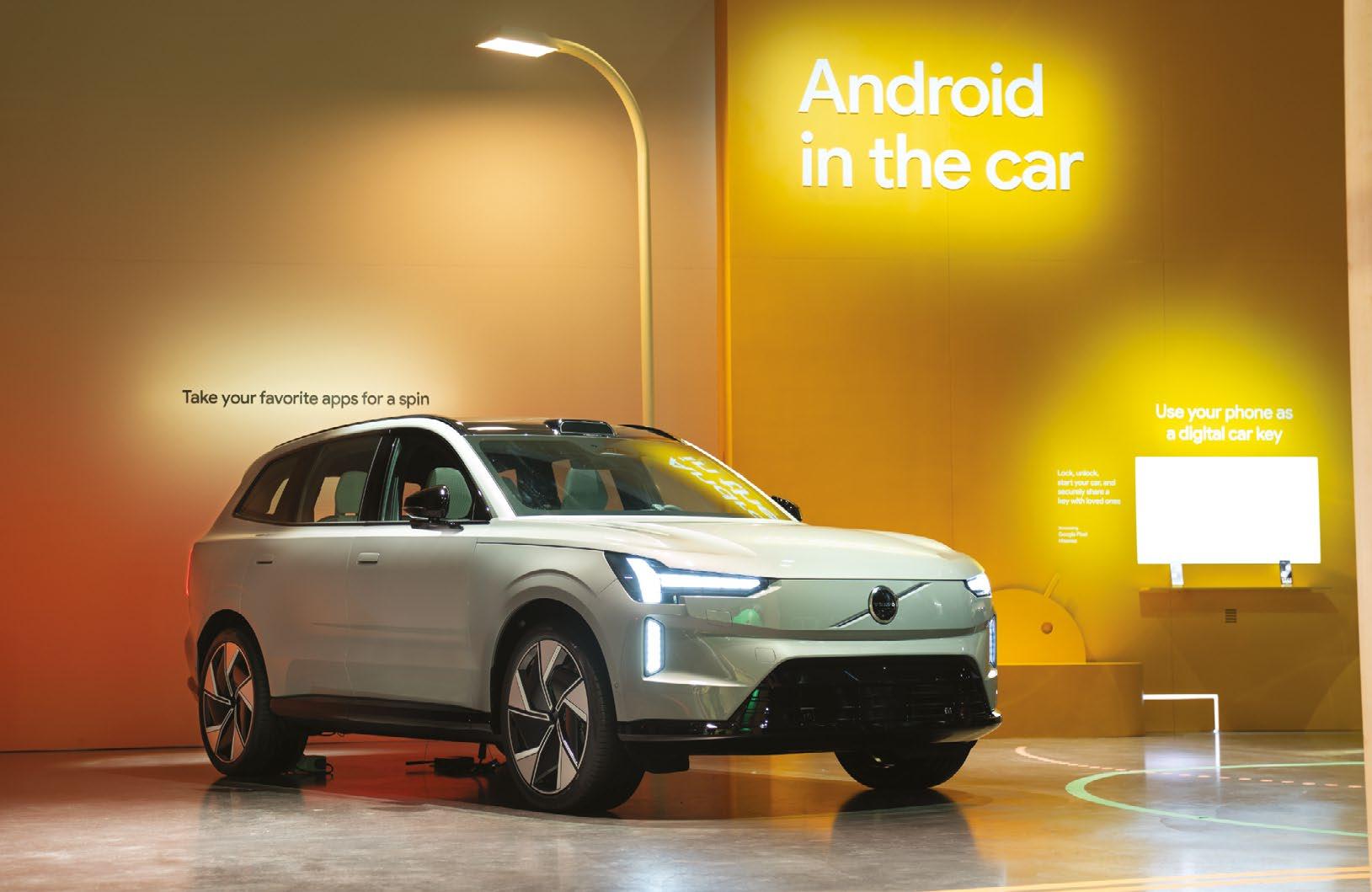
“Broadcast AM radio is an essential part of our emergency alert infrastructure, but the responses to my letter show that far too many automakers are ignoring the critical safety benefits of AM radio.

ONE Media moves forward with “radio over ATSC 3”
New developments could fit 40 or 50 audio channels in a small slice of a NextGen station’s bandwidth
In a Sunday session of the NAB Show Broadcast Engineering & IT Conference, ONE Media Systems Engineer Liam Power will explore capabilities of the company’s proof-of-concept project showing how radio and other audio-only services could be delivered over ATSC 3.
ONE Media is a subsidiary of Sinclair Broadcast Group, essentially Sinclair’s innovation lab. Much of its work centers around ATSC 3.0 or NextGen TV, a set of standards for television broadcasting created by the Advanced Television Systems Committee.
Mark Aitken is president of ONE Media and senior VP of advanced technology of Sinclair. He talked with us about the organization’s radio project.
What should we expect to see at the NAB Show?
Mark Aitken: We’ve spent a lot of time on the subject of radio inside ATSC 3 because it’s a great value. There are a lot of radio folks looking for additional platforms for their content because of the sheer volume of competition out there.
We’re getting closer to realizing such a product. People will see a clean, navigable version of our latest radio project on the ATSC booth. And Liam Power, the chief engineer involved with the project, is going to walk an audience through an understanding of ATSC 3 as it applies to audio-only services.
We also see a need to evolve and provide additional clarity on the ATSC standard itself. A new project proposal — ATSC calls it an NPP — will be filed after the show with the support of us and others whom I can’t name yet.
But the company submitting it is Fraunhofer, known to your readers in part because of Digital Radio Mondiale. Some of the technologies that are an integral part of the DRM profile are going to be brought into ATSC for standardization — most importantly, Fraunhofer’s highly efficient xHE-AAC audio codec.
It allows high-quality voice at very low bit rates of around seven kilobits per second for talk radio, and the beginning of high-quality stereo music audio at bit rates from 24 kilobits per second and up.

So a mixture of talk radio and high-quality stereo audio could occupy just a fraction of the bandwidth that’s available in an ATSC 3 broadcast station. It would be easy to offer local radio services and national services in a very small part of our spectrum.
So is it correct to say that you’re envisioning a system that would allow audio-only channels to be included in any one of the proliferating number of ATSC 3 stations; and that audio could be heard on the specialized ATSC 3 receivers that are now in the market or pending?

Aitken: That’s correct. You know, AM is not the cleanest of radio spectrum bands — as was made well known by Tesla, for example, when Elon Musk professed they were going to drop AM radios from electric automobiles because of the impact of impulse noise. He was met with many choice words, because radio plays an extremely important role as the backbone of our emergency broadcast system.
The UHF spectrum is not prone to the same kind of noise from electric motors. You can provide clean services unimpeded by a noisy RF environment.
We’ve also had a lot of complimentary feedback from ATSC 3 viewers about the free streaming radio services currently we offer. Many homes today no longer have radios, so having access to radio stations — local stations and a broad variety of other services — has been viewed as a real plus for viewers.

In the automobile, it’s not just about radio, it’s also about video-related services. A couple of the largest automotive manufacturers are beginning to test integration of ATSC 3 receivers into the automotive environment through their telematic control unit, or TCU, which now support software downloads and wireless transmission of big data files to an increasingly large number of automobiles.
The idea that carmakers can put in a single receiver and get a multiplicity of services is extremely inviting to them. We can do software downloads, we could do enhanced GPS, we could provide mobile video services, and we could provide radio services. But integrating ATSC 3 into the
dashboard of cars will be a longer-term proposition that takes several years.
And throughout this conversation, when you say “radio” you’re actually talking about “audio-only services” of any kind, yes? It could be services that ONE Media owns, or that it populates and provisions with syndication; or maybe you would partner with licensed broadcasters, but not necessarily just them — Aitken: Yes. But whether we are actually running a service is irrelevant because the business we’re in is transmitting bits. If you knocked on our door and said, “Hey, I want to launch a radio service, can I rent bits from you,” we’d say, “Sure, let’s have that conversation.” At the same time, we think carrying local radio is good business from a public service standpoint.
We’re non-discriminatory. We don’t necessarily believe that we’re the right people to run a radio service, but we’re building the hardware and software to do that. We see our future in selling bit capacity inside of our ATSC 3 signal, and we’re trying to maximize the number of services that can be offered for the lowest amount of bits.
What comes next?
Aitken: That would be a precommercial launch, a beta service. We’re working to get the standard prepared. We’ve been dealing with the standard longer than just about anybody else; we built the first demonstrator system
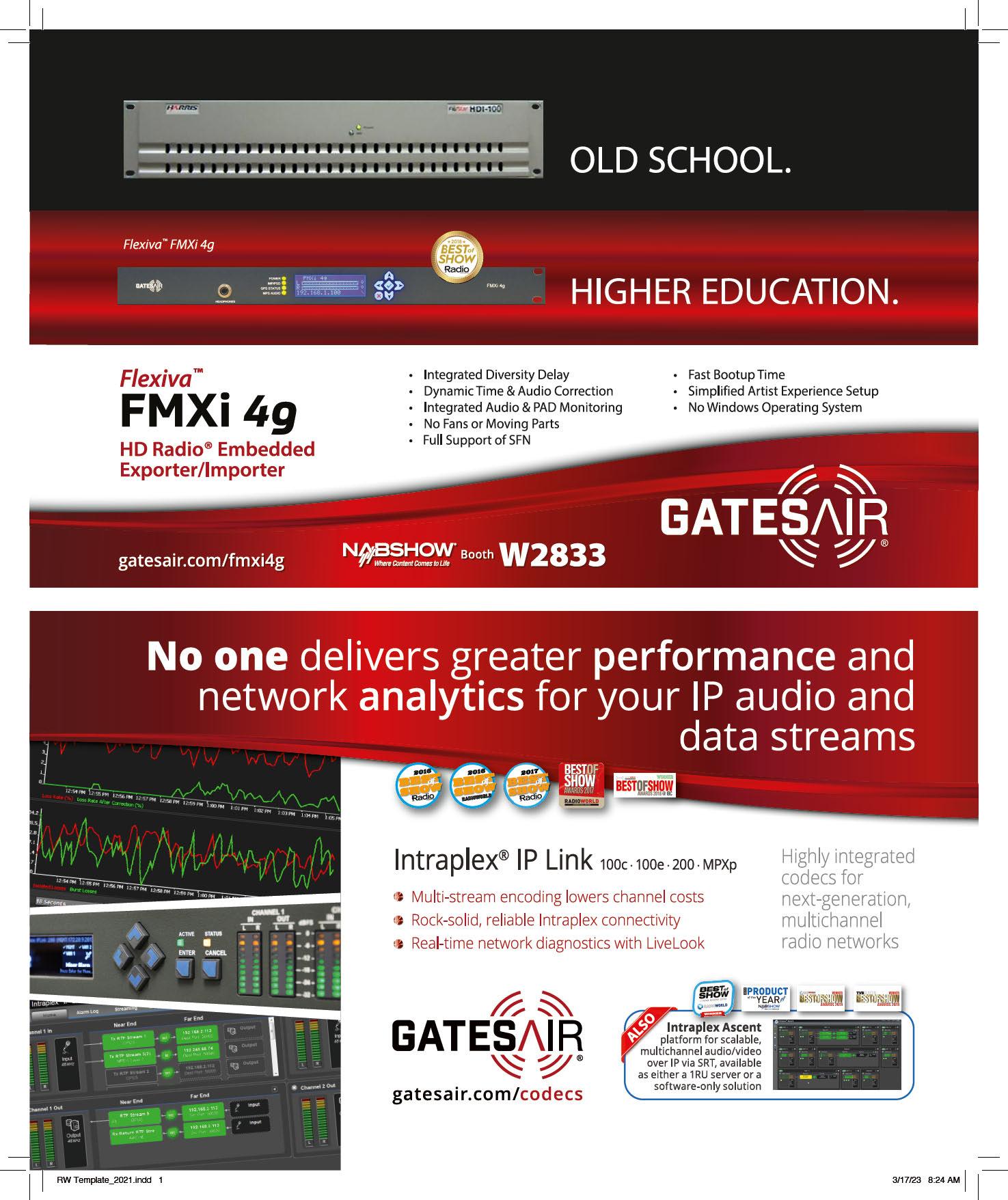
of the full standard. But we’ve got to make it easy for audioonly services to be provided.
Another reason is that it is effectively a mandate of the marketplace in India, which is pursuing this standard for their own purposes.
How many ATSC 3 stations are on the air now?
Aitken: Over 60% of the U.S. public is covered by at least one over-the-air local TV station. It’ll probably be 80-plus percent by the end of this year. A number of large markets are starting to come on. It has been a cumbersome regulatory process to do the simplest of things to get ATSC 3 on the air.
But when those large markets come online … Let’s say one radio station requires 25 kilobits, so four stations is 100 kilobits. Forty radio stations is 1 megabit — that’s 1 megabit offering 40 channels of stereo service! Put talk radio into the mix, and you’re looking at 50 channels.
A megabit is just 4% of the ATSC 3 station’s bandwidth. So in our hypothetical example, you could bring every local radio station in any market to the consumer via ATSC 3.
And what’s happening on the receiver side?
Aitken: There are a hundred or more models of television sets that support ATSC 3. The high-value products were first — big-name brands like Sony, Samsung, LG and Hisense.
Several set-top box manufacturers demonstrated at CES and you’ll see some of them as commercial product at the NAB Show.
Newswatch Salem on Daylight Saving Time
If Daylight Saving Time became permanent, it would deal a “massive blow” to AM radio operators across the United States, according to Salem Media Group.
That warning comes as proponents of the change resumed their push in Congress this winter.
Salem owns approximately 70 AM stations and has about 750 AM radio affiliates. Co-founder and Chairman Ed Atsinger III and CEO Dave Santrella wrote in March to House and Senate committee leaders in both parties expressing opposition to legislation that would make DST permanent.
Daylight Saving Time resumed on March 12 in most of the United States. Sen. Marco Rubio, Republican of Florida, is a proponent of making DST permanent; the Senate passed his “Sunshine Protection Act” last year but the legislation’s prospects have been uncertain.

H.R. 1279, introduced in the House in March, is sponsored by Rubio’s fellow Florida Republican Rep. Vern Buchanan.
Atsinger and Santrella reminded the legislators of the news, traffic/ weather, sports and talk content on AM. “In some municipalities, AM
Receivers are not embedded into the automobile yet, as I said, but that’s a longer-term integration.
BitPath a is joint venture of Sinclair Broadcast Group and Nexstar Media Group. It was set up to aggregate the bandwidth of multiple stations to be able to launch 3.0 services. But it’s also developing viable business models based on high-value bits, to scale it. They been working on several types of receiver design kits for the automotive side — enhanced GPS and other services that would ride on the spectrum. And there are now a handful of commercial companies making simple USB receivers. The ability for someone to experiment has opened up.
So it’s just a matter of time.
radio stations also cater to a specific immigrant community, reaching their listeners with a specific foreign language or other programming elements like music or sports. AM is still a very effective and highly reliable platform for audio broadcast.”
They explained that most AM stations must follow a sunrise and sunset schedule that can reduce their transmitter power and coverage. The Salem leaders said the bill would reduce coverage in the crucial morning drivetime hours.
“This issue would be even more detrimental during the darkest days of November, December, January and February, when AM stations would not be at full power until at least 8 a.m.,” they wrote.
“From a programming and revenue standpoint, the morning drive daypart is still one of the most significant dayparts on an entire radio station. ...
“This challenge might likely be the death blow to many AM radio stations,” they concluded, saying they are “confident you don’t want to see that happen.”
“
The UHF spectrum is not prone to the same kind of noise from electric motors. You can provide clean services unimpeded by a noisy RF environment.
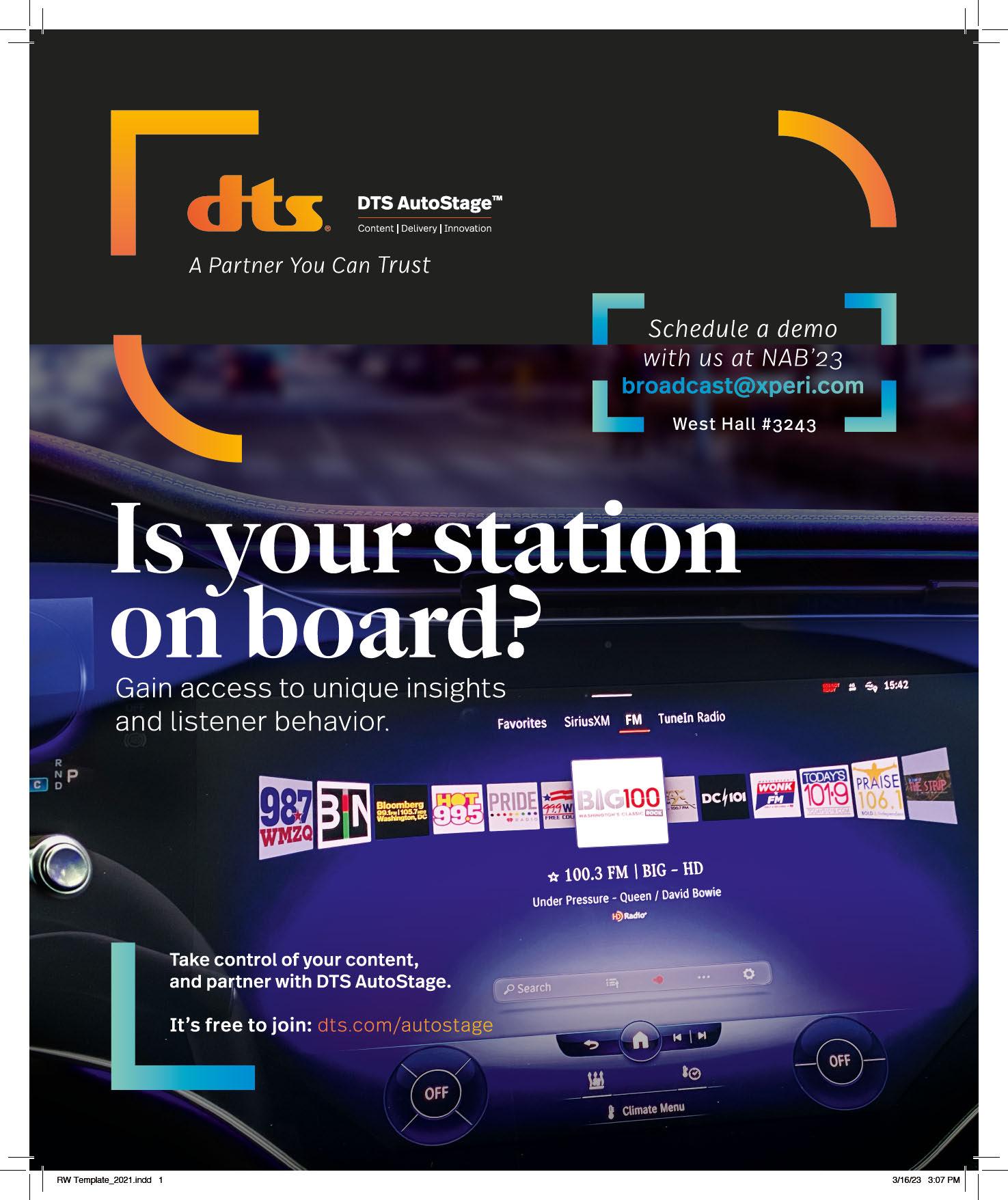 John Bisset CPBE
John Bisset CPBE
The author is in his 33rd year of writing Workbench. He handles western U.S. radio sales for the Telos Alliance and is a past recipient of the SBE’s Educator of the Year Award.
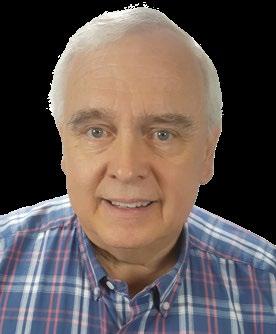
qualify for SBE recertification credit. Email johnpbisset@ gmail.com.
Trust, but verify … with your oscilloscope!
Frank Hertel uses one to verify a transmitter’s output power and modulation
Newman-Kees Principal Consulting Engineer Frank Hertel says a friend recently brought him an old LPB 30-Watt AM transmitter for repair. It’s a good low-power transmitter, but this one had been abused.
Once Frank had it repaired, he needed to verify its output power and modulation. He decided to use his oscilloscope to accomplish both verifications. That’s Frank’s preferred method but his friend had never done this and was interested in the process. It’s a procedure worth considering, especially when other verification methods might be wrong due to miscalibration. Frank shares the process with Workbench readers.

You don’t need an RF ammeter or power meter, just a dummy load or a 50-ohm antenna that you know is good. The process requires that your AM transmitter is operating into a 50-ohm load with zero reactance.
Several notes at the outset:
1. For AM transmitters of 250 Watts or less, you can connect directly to the transmitter’s RF output; but for the safe of safety, be sure to use a 10x (times ten) oscilloscope probe. This also assumes you honor the oscilloscope probe and ’scope voltage limits.
2. Again, for safety: When working with AM transmitters operating with more than 250 watts, connect your oscilloscope’s 10x ’scope probe only to a calibrated sample port of at least –20 dB. Failure to do this will damage your oscilloscope!
3. Remember that when a transmitter is fully modulated, the peak-to-peak voltage of the transmitter’s RF output will be twice the level of its unmodulated RF output!
4. To protect your oscilloscope and your 10x probe, always verify that both of them are capable
of handling the high RF voltages that will be presented to their inputs when the transmitter is modulated at 100%.
To proceed: With the transmitter AC off, connect the ’scope probe as shown in Fig. 1. Make sure the RF output is terminated in a known 50-ohm dummy load. When you apply AC power to the transmitter, you should see an oscilloscope display similar to what’s pictured in Fig. 2.

In this case, the ’scope has been set to display 20V per reticule, and our figure shows 120V peak-to-peak. This is the unmodulated RF carrier. Note that Frank has expanded the view of the RF carrier to check visually for any distorted carrier wave or harmonic content.
Using this 120V value, you can calculate the transmitter power output using the formula 1202/400=36 Watts.
You are squaring the peak-to-peak voltage displayed on the oscilloscope, then dividing that number by 400.

The transmitter is indeed making power and can be trimmed, using the power adjust potentiometer to a licensed 30W.

Above
Now it’s time to check the modulation level. In Fig. 3, Frank displays the 100% modulation on the left, comparing it to the unmodulated carrier on the right. Remember that 100% modulation occurs at carrier “pinch-off.”
Right
You’ll also want to remember that a 100% modulated carrier yields double the voltage level of the unmodulated carrier. Also keep in mind that when the RF voltage is doubled (at 100% modulation) that the RF power is four times the value of the unmodulated carrier. This is defined as peak envelope power or PEP.
The accompanying table compares peak-to-peak unmodulated voltages and power output. Look at how much power is generated when the peak-to-peak voltage is 5,120. Broadcast engineering is not for the faint of heart!
On another note
I recently noticed that both the beacon and the side obstruction lights on a newly erected cellular tower were flashing. Are you aware that the FCC now allows this change to save birds?
Apparently migrating birds are attracted to steady-on lighting but avoid flashing lights. Before I could investigate, frequent Workbench contributor Dan Slentz sent a link to an FCC publication that describes the issue and offers a solution. In addition to saving birds, there’s a power-saving benefit that should appeal to managers and owners. Visit www.fcc.gov/guides/towers-and-birds.

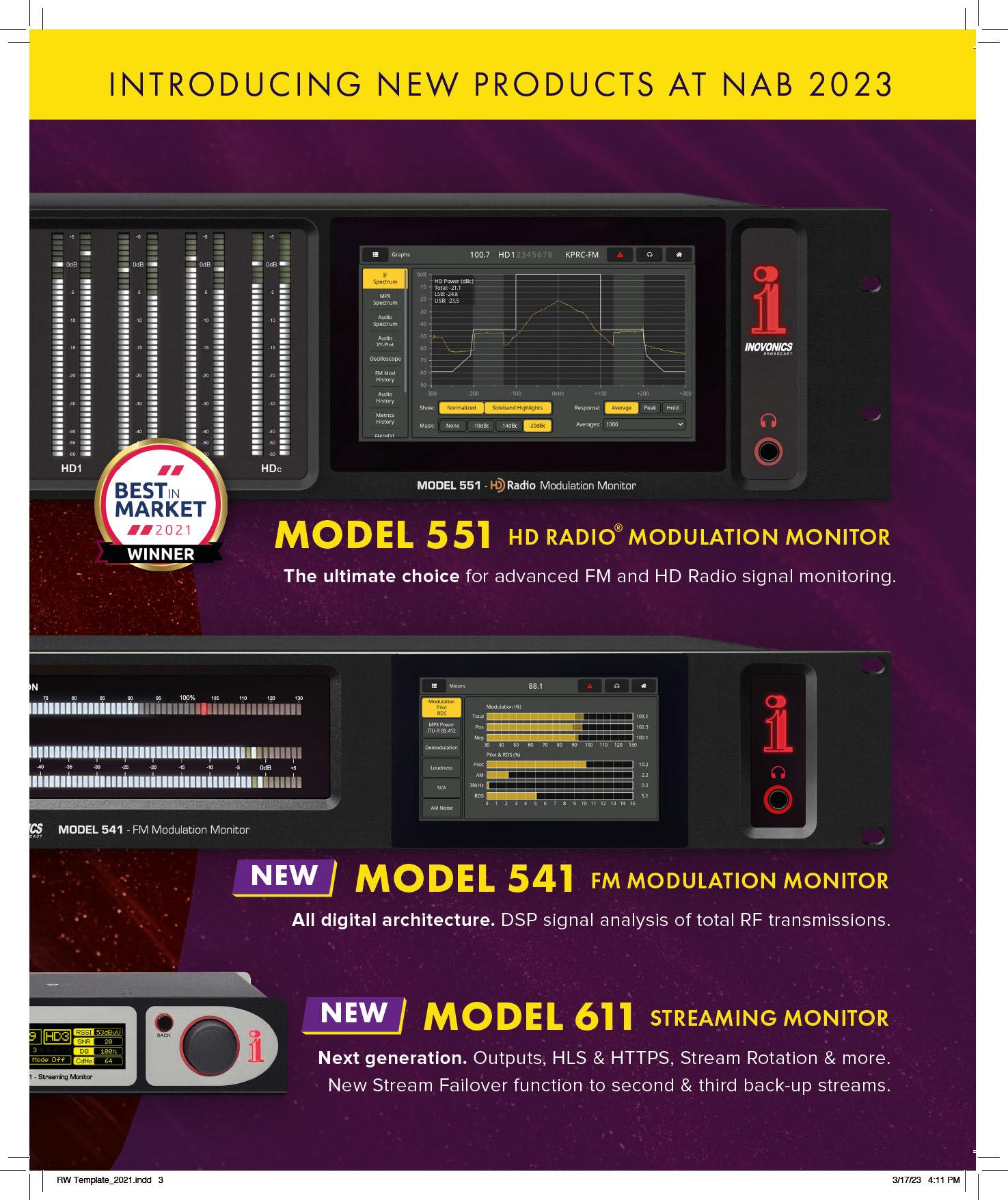
For hybrid radio, “it’s all about the metadata”
The Radio Committee of the North American Broadcasters Association will report on its work
The Broadcast Engineering & IT Conference starts on the NAB Show’s Saturday morning at 10 and concludes on Tuesday afternoon. Sessions will be held for the first time in the West Hall, which show organizers have named the Broadcast District this year.
A Sunday session will explore “Broadcasters and Hybrid Radio,” and another will look at the results of testing that support the NAB/Xperi petition asking the FCC to allow higher HD Radio power levels.
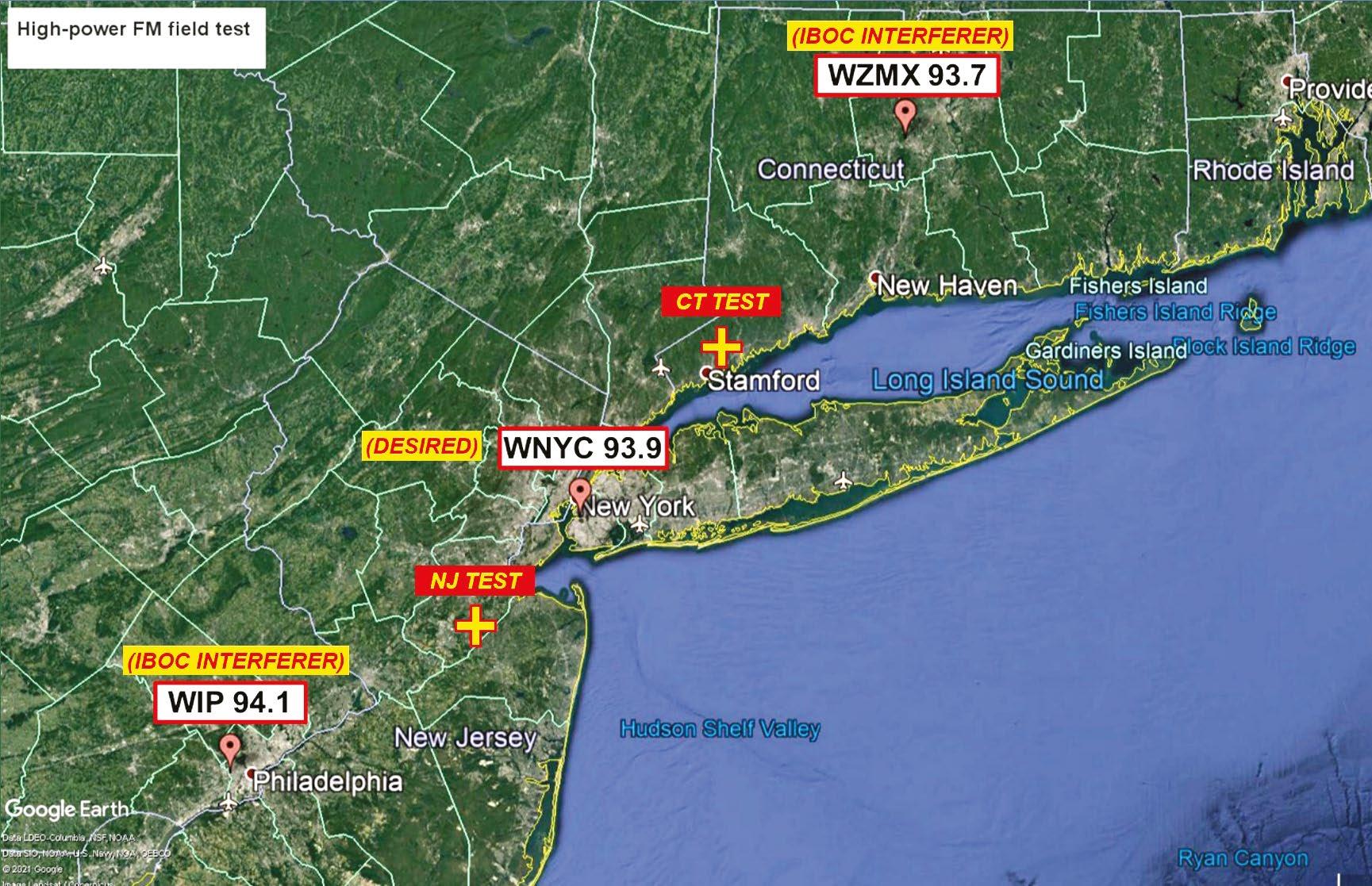
David Layer, vice president, advanced engineering for NAB, is involved in both sessions, and we asked him about them.
You’ll moderate the session about hybrid radio, which is subtitled “It’s All About the Metadata.”
What can we expect?
David Layer: I am very excited about this session as it represents the culmination of a project conducted by the North American Broadcasters Association Radio Committee, or NABARC, where I serve as vice-chair.

NABA is producing this session and the purpose is to introduce the “NABA Insights on Hybrid Radio and Metadata for Broadcasters” document.
Jeff Detweiler, senior director, broadcast technology with Xperi, served as lead on this project and he will kick things off, followed by a discussion of this important topic between Jeff; Nick Piggott, project director with RadioDNS; Laura Ivey, director of research with Edison Research; and myself.
I expect this discussion to focus on how broadcasters should be
satisfying the need for providing good metadata to today’s modern radio receivers, as well as on some revealing and relevant consumer data from Edison Research.
How will it differ from the previously released “In-Car User Experience” guidelines?
Layer: The NABA In-car User Experience Guideline, released in January 2022, was a North American version of a document produced by the WorldDAB Automotive committee.
These guidelines were created primarily to inform automakers about how to deliver the best possible radio experience from the dashboard and were based largely on the results of consumer research. They were also informative for broadcasters as they indicate the kinds of experiences automakers were being asked to support, which speaks to the important features that broadcasters should be supporting as well.
The latest NABA document on hybrid radio and metadata, the focus of the Sunday NABA panel at the



show, provides more detailed information for broadcasters on the hybrid radio landscape, the features that broadcasters need to be supporting, and how that might be accomplished.
The hybrid radio system most familiar to U.S. readers will be DTS AutoStage, which for many people is still a new concept. What other platforms should they be aware of?
Layer: The first hybrid radio platform available in the U.S. came from Audi in 2020, and supports enhanced station lists and “service following,” whereby a station’s over-the-air signal is replaced by a streaming audio version of the signal as the vehicle leaves a station’s OTA coverage area. Stations need to make use of RadioDNS service information (SI) files to support these features.
DTS AutoStage arrived in the U.S. in 2021 in Mercedes S-Class luxury vehicles, and in 2022 in a number of Hyundai, Kia and Genesis models. Broadcasters can best support the hybrid radio features of the DTS AutoStage
work done by NAB, iHeartMedia, Audacy, Xperi and others to analyze the performance of FM-band HD Radio stations and determine the amount of objectionable interference actually experienced by first-adjacent-channel stations as a result of digital transmissions.
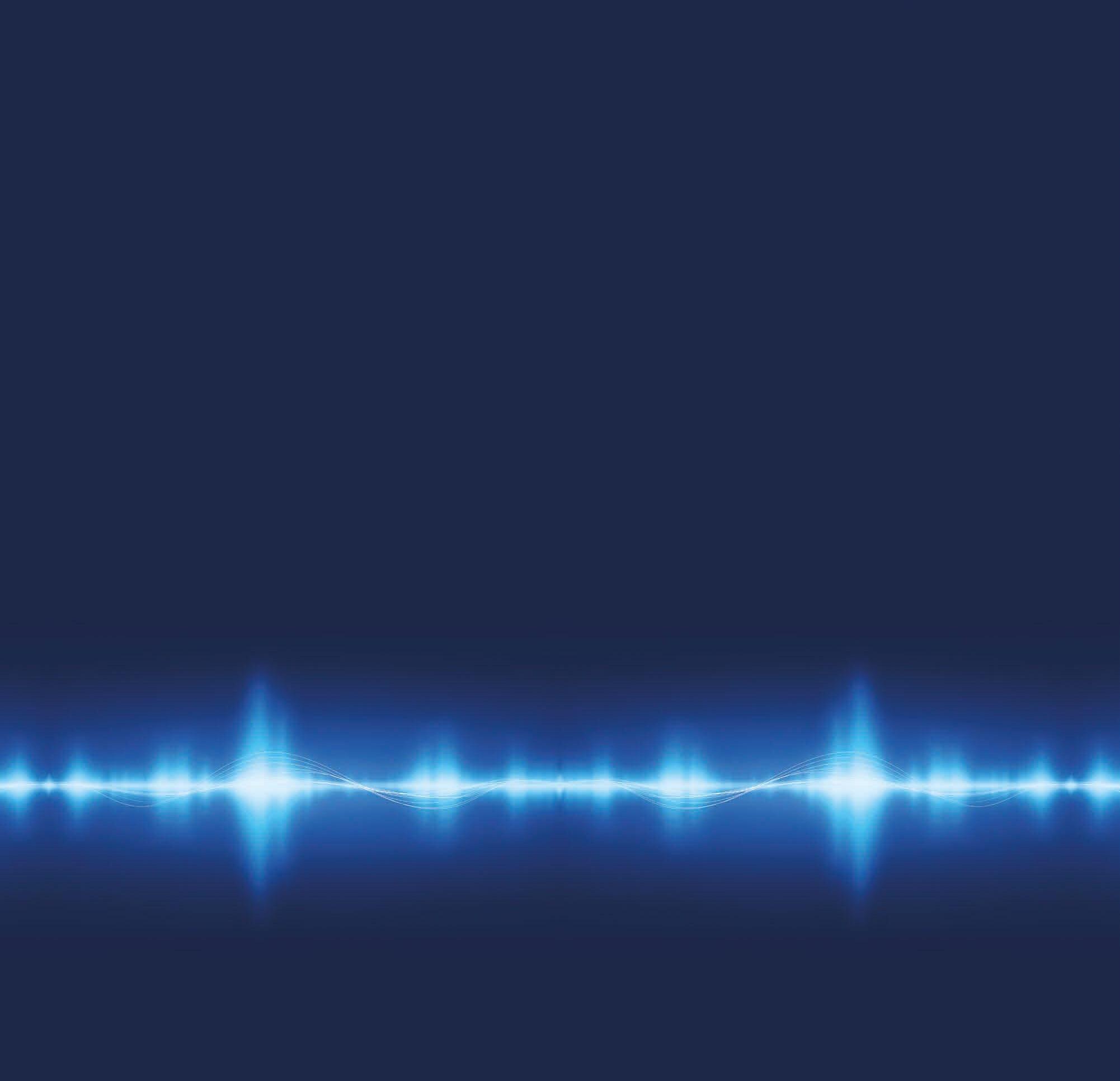
Based on this analysis, a proposed modification to the FCC’s formula for allowing stations to operate up to power levels of –10 dBc was formulated, and in March 2021, some field tests were conducted to demonstrate the efficacy of the proposed formula.
Our findings both confirmed that the FCC’s current formula is too conservative and that our proposed formula would allow for increased digital signal power without creating objectionable interference.
What other topics for radio do you expect will be discussed during the BEITC?
Layer: Another important presentation will be by Paul Peyla, director, systems engineering with Xperi, and Dave Kolesar, senior broadcast engineer with Hubbard Radio,
vehicles by signing up with Xperi to directly interface with the AutoStage system.
Some BMW vehicles also have a limited hybrid functionality, also supported by broadcasters with RadioDNS SI files.
Xperi has said that more automakers will be announcing support for the DTS AutoStage platform in 2023 and we are all eagerly awaiting those announcements.
You also will give a presentation on a high-power digital FM field test project. Can you give us a summary of the findings?
Layer: NAB, with Xperi, jointly filed a petition with the FCC in October 2022, requesting a relaxation of the rules pertaining to allowable digital signal power for FM-band digital radio stations.
The proposal made in this petition was a result of extensive engineering
on the field testing of new, advanced HD Radio FM service modes. I was fortunate to be able to go on a ride-along for one night of their testing and observe the great work being done by Xperi, not to mention the significant support they received from Hubbard that allowed Xperi to conduct these tests. Paul and Dave’s presentation and accompanying paper in the conference proceedings will provide an understandable and insightful discussion of the capabilities offered by these modes and how they were tested. (See story, page 32.)
And I want to remind all those attending the show to be sure to come to the annual Amateur Radio Operator’s Reception, this year being held on Tuesday, April 18 in Room W317–319 of the Las Vegas Convention Center and sponsored again by our friends at Turner Engineering. The highlight of this event is the door prize giveaway; last year we gave away over $15,000 in prizes.
While the focus is on Ham radio, everyone is welcome to attend, and a number of prizes are of general interest — like Radio World T-shirts!
“
The latest NABA document … provides more detailed information for broadcasters on the hybrid radio landscape, the features that broadcasters need to be supporting, and how that might be accomplished.

Paul Shulins goes on a Stellar road trip
His NAB Show presentation will be about his 20,000-mile, 70-site adventure
During the late summer and fall of 2021, Paul Shulins had the unique opportunity to visit 70 multiplexed TV and radio sites within a threemonth period to install his new Stellar Eclipse Site monitoring and VSWR Protection system for American Tower Corp.
“As the TV repack was coming to a close, many new multiplexed TV combined systems were coming online,” he said.
“This was a perfect opportunity for the tower company to install monitoring and protection equipment, since the transmission gear was new and access to the equipment was simplified.”
The project involved a lot of challenging logistical planning.
“I decided to access most of the sites by renting a cargo van, and driving more than 20,000 miles to complete the mission. Of course the van was not large enough to accommodate all the equipment needed for the 70 sites, so I had to utilize a logistics company that received all the gear from my suppliers and held it in a warehouse until I arrived at each site, and then overnighted it to me at each tower site.”
Shulins said VSWR protection and monitoring is important for all broadcasters because it’s not a question of “if” but “when” antenna systems and lines will fail.
“This is a simple law of physics due to the forces of nature that act upon the antennas and transmission lines over long periods causing movement, oxidation and discontinuity.”
Above “While installing a few monitoring systems at the John Hancock Building in Chicago,” Shulins said, “I took a minute to snap this photo out the window of Floor 97.”

Closely monitoring these systems, he said, is critical to detecting issues as they crop up and addressing them before a catastrophic failure occurs, causing downtime and large repair expenses.
“Most engineers realize this, but proactively doing something about it is part of what I advocate. Unfortunately I have seen the aftermath of system burnups, and it’s never pretty. The work tower crews need to perform to restore these systems is expensive and dangerous. Anything we as broadcasters can do to prevent these problems from becoming catastrophic is going to enhance safety and save money.”
Modular approach, almost
At each site, Shulins had to deliver a rack for the electronic equipment, make sure AC power was available and run the wires neatly around the combiner modules at the directional couplers to the racks.
“Then installing the RF sensors at each directional coupler, installing the rack electronics, modifying the computer software to be specific for each site, complete with station logos and frequencies, test connectivity to the
“ Shulins said it’s not a question of ‘if’ but ‘when’ antenna systems will fail.

internet, label all demarcations and finally calibrate the system and train the operators.”
He also provided monitoring for transmission line and room temperatures as well as line pressure.
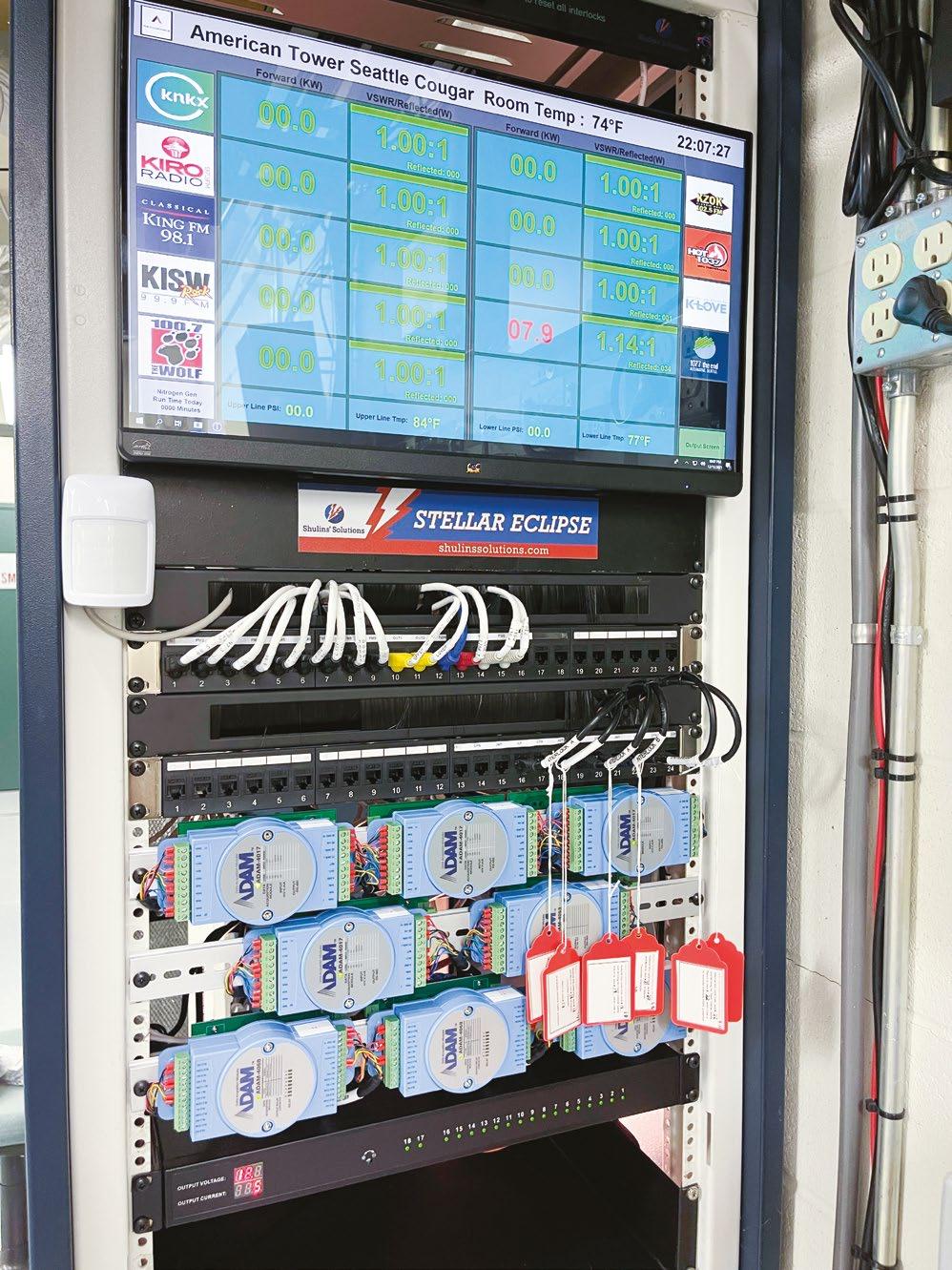
“In some cases where motorized coax switches were employed, monitoring and controlling these was also within the scope of my work. This generally took a day or two.”
He kept a nervous eye on the weather on the trip, particularly during hurricane season in Florida, but managed to avoid problems.
“Getting the equipment racks in place in advance of my arrival was the biggest worry. And of course each site is unique, so there was no cookie-cutter approach to the route the wires needed to take.” The plan was laid out months ahead of time, and each site was a new experience, but Shulins said the staff at American Tower made sure he had good access to each site.
He also was impressed with the engineers and site watchers along the way.
“From Boston to Seattle the people were great, helping me along the way with local information, asking great questions and helping me learn more about TV sites, since my background is in radio.”
He said about 70% of the sites were related to the TV repack. “I applaud Jim Leifer from ATC for recognizing how important VSWR site monitoring is, and we have already seen the system save several sites from expensive repairs.”

Does he have a favorite memory of the experience?
“I remember one site in Texas that was deeply isolated in the woods and could only be accessed by one five-mile road. There was no cell service at this site, and anytime after it rained, the dirt road was in such bad shape that site access was nearly impossible. One had to wait days for the road to dry up before attempting the drive,” he said.
“There however was a railroad track that crossed that road, and sometimes a train would park itself on the tracks, completely blocking the road. I heard stories about engineers waiting in their cars with no cell service for hours waiting for the train to move! I luckily managed to avoid any stopped trains.”
“ Unfortunately I have seen the aftermath of system burnups, and it’s never pretty.

HD Radio’s advanced FM service modes are in the spotlight
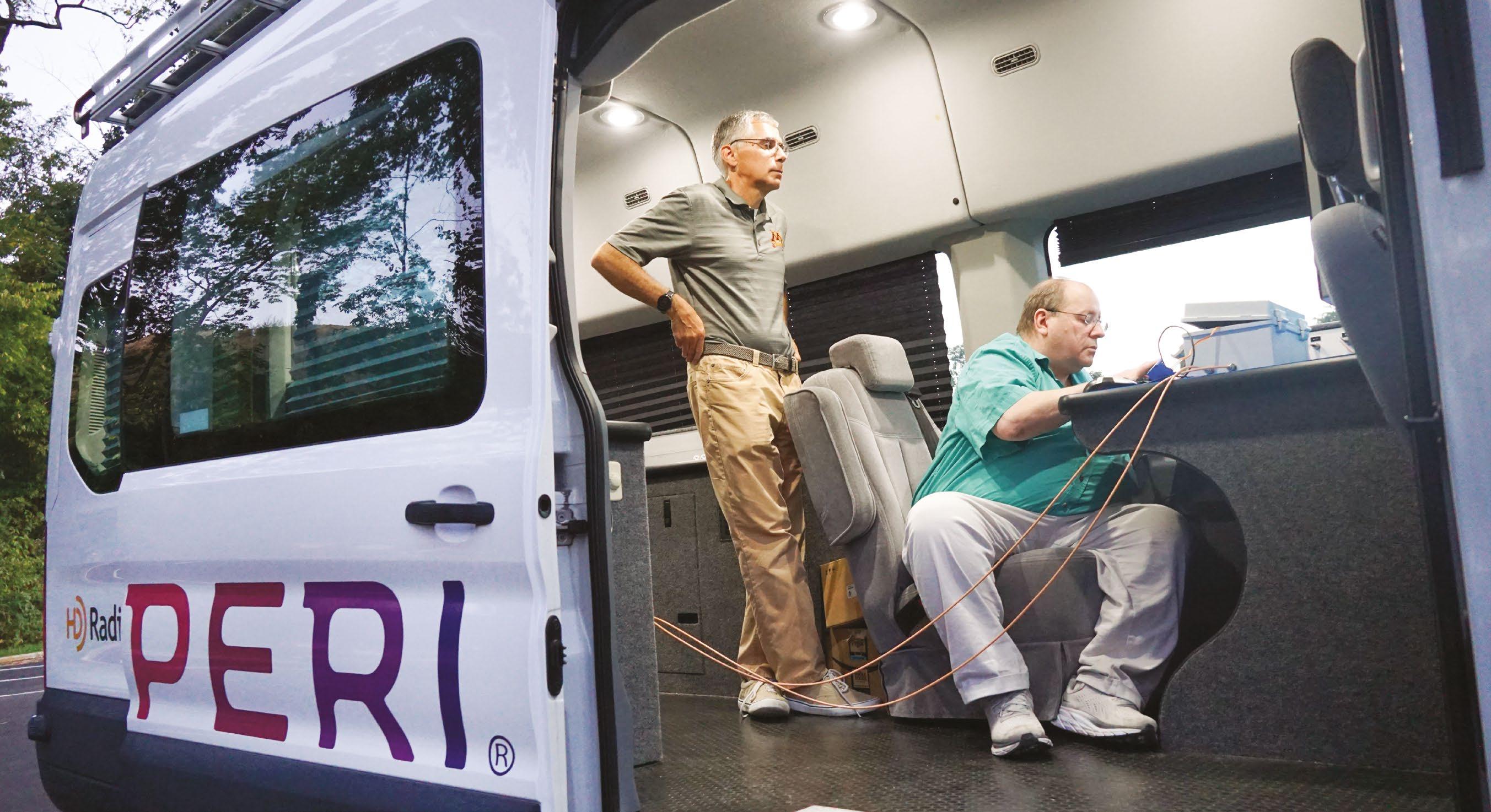
Kolesar and Peyla will report on field tests at WTLP in Maryland
On Sunday morning of the NAB Show, Dave Kolesar, senior broadcast engineer at Hubbard Radio, and Paul Peyla, director of systems engineering for Xperi Corp., will discuss “HD Radio Advanced FM Service Modes” and the results of field tests at WTLP(FM) in Braddock Heights, Md., near Washington. We asked Kolesar about it.
Why is this important?
Dave Kolesar: FM radio stations need to think about the future in many ways, including the nature of terrestrial broadcasting. The advanced service modes tested on-air last year at WTLP all offer additional data capacity, with some offering backwards compatibility with existing modes.
How to take advantage of the additional bandwidth is still an open question. Will a station benefit by offering more audio subchannels, or perhaps from the transmission of additional data services? Perhaps a subscription audio service might work.
Thinking about the next generation of terrestrial digital
services is imperative to keeping FM stations relevant, compelling, and profitable in the years to come.
What was the goal of that testing and what was the process?
Kolesar: The goal of the tests last year at WTLP was to verify laboratory testing of the new FM HD service modes in a real-world setting. It’s one thing to posit a theory concerning how well a system will work and test it in a controlled environment. It’s quite another to put the modes on the air and drive around.
That’s exactly what we did: We used an off-the-shelf transmitter with a custom-programmed exciter, and used the Xperi test van to travel certain routes, allowing us to document signal performance in specific environments — hilly, flat, urban, suburban, rural and so forth. Then we compared our results to the laboratory tests to see how closely the predictions match up with reality.
Briefly summarize the results that you’ll explore during the session.
Kolesar: For each route, we compared the availability of the signal with laboratory testing under a similar condition. Of course, we should expect a coverage penalty for more advanced modulation schemes, and we saw that. However, it was quite satisfying to see that the predictions based upon the laboratory tests tracked with what we saw in the real world, giving us confidence that the coverage areas of the new HD Radio service modes can be predicted with a good degree of accuracy.
Anything else we should know about your session?
Kolesar: Xperi has been working very hard to bring these new service modes into fruition, and Paul Peyla directed these tests. It has been an honor and a privilege — not to mention a lot of fun — to work with him, Jeff Baird and Mike Raide to make this project a reality. Many thanks to everyone who helped with this.

What other trends or topics do you expect will be discussed during the BEITC?

Kolesar: I would fully expect to see and participate in a discussion about connected radio systems. Radio stations must use the data connections increasingly available in cars to provide as compelling of a user experience as possible.
HD Radio also plays an integral role in connected radio platforms, and I’d like to see the importance of digital transmissions and proper metadata execution discussed as essential to the modern listener experience. All of these things together help broadcast radio stay competitive by looking, sounding and feeling like all other audio services in the dashboard.
 Above The audio output state for advanced FM service mode MP1X, logical channel P4, from the WTLP field tests.
Above The audio output state for advanced FM service mode MP1X, logical channel P4, from the WTLP field tests.
Modernizing NRSC AM proof measurements
Dalke and Hadfield have been working on making the process easier
Jim Dalke and Marty Hadfield point out that more than 4,000 AM radio stations in the United States are required annually to make occupiedbandwidth transmitter system measurements to comply with National Radio Systems Committee standards and to place the reports in the station’s official files.
The duo, who respectively are the CEOs of Dalke Broadcast Service and The Hadfield Group, will give a talk during the Broadcast Engineering & IT Conference on the topic of modernizing these AM proofs.
“Looking through a lens over 30 years down the road from the NRSC-AM implementation, we are inspired to consider reevaluation of several aspects of the requirements adopted by the FCC,” Hadfield said.
Proof-of-performance measurements in fact have been a part of AM transmitter history dating back to radio broadcasting’s origins, according to Dalke.
“For many years the focus was on the audio performance of the AM transmitter — frequency response, distortion and noise. That changed with NRSC standards introduced in the 1980s, with the emphasis on spectral purity and occupied bandwidth.”
Dalke said measurements for these newer standards were most efficiently accomplished with sophisticated and expensive spectrum analyzers.
Today, measurements can be made with imported spectrum analyzers costing much less; and Dalke and Hadfield have been experimenting with software-defined radios that are even cheaper.

“There is also a question of the relevance of the annual measurements, given today’s advanced solid-state transmitter technology and associated sophisticated audio processing, which virtually eliminates
overmodulation commonly associated with out-ofchannel emissions.”
What are the challenges to radio stations today in doing such proofs?
“The requirements for NRSC performance testing include relatively sophisticated equipment and the technical experience to operate it,” Dalke said.
“While a consolidated broadcast operation may have the equipment and technical manpower, either locally or corporately, to accomplish the measurements, an independent AM broadcast business has to be able to afford contract engineers for these professional measurements. These contractors are becoming hard to find and engage.”
Dalke and Hadfield have been developing procedures and processes to make the necessary field measurements and efficiently compiling the data into FCC compliant reports. Their paper provides their experiences with lower-cost spectrum analyzers including SDR hardware and
Compliance With Emission Limits, FCC Rule §73.44

sophisticated software to analyze and compile the data to create professional reports.


The pair have long experience with broadcast transmitters and with the requirement for providing FCC-compliant performance testing for AM, FM and TV equipment.




Both hold Certified Professional Broadcast Engineer certification from the Society of Broadcast Engineers, and

both are inspectors in the Alternative Broadcast Inspection Programs of the state broadcast associations in Oregon and Washington. The AM ABIP inspection includes making sure the broadcaster has a current “NRSC Compliance Report” in its official files.
Their session will be held on the Tuesday morning of the BEITC.
Here are more tech sessions of interest
Virtualization, cybersecurity and RF innovations are on the menu



The opening of the Broadcasting Engineering and IT Conference is on Saturday, April 15, at 10 a.m. Renard Jenkins, president of the Society of Motion Picture and Television Engineers, will give the keynote on “New Tools, New Opportunities: Preparing Engineers and Technologists for Longevity.”
Here is a sampling of more sessions of the BEITC, in addition to the ones described on previous pages of this issue.
SBE Technology Update — Sunday, 11:30 a.m. “Presenters will review a variety of advanced technology solutions, including ATSC 3.0 and CDNs.”
Reconfigurable Manifold
Combiner — Monday, 11:50 a.m. Derek Small of Dielectric explores the use of a new reconfigurable manifold for broadband RF systems, which the company says will allow future stations to be added with ease and stations changed out more easily.
Fireside Chat/Radio Panel — Monday, 1:30 p.m. “The fireside chat is with Verizon about open caching. The radio panel will discuss how to set up live streaming with minimal investment.”
“Radio - Broadcast to Live Video Streaming for under $1,000: How to Crawl, Walk, Run!” — Monday, 2 p.m. Vance Harrison from the Oklahoma Association of Broadcasters and several guests “will demonstrate how to take your radio broadcast from crawl, walk and run for under $1,000 additional investment.”
IT infrastructure through identification of security holes and vulnerabilities. You can verify precautions you believe are in place and identify any holes before criminals can exploit them.
“Project Origin: Fighting Disinformation with Authenticated Provenance Metadata” — Tuesday at 1:50 p.m. “In a world in which broadcast news clips are regularly shared and the veracity of video content can be undermined by AI assisted photo realistic image generation, it is vital to take steps to maintain trust in the media industry.” Teams from
“How AI Can Reduce Energy Consumption and Drive Sustainability in FM Radio Broadcasting” — Tuesday, 10:20 a.m. Tony Peterle describes the development of WorldCast Systems’ SmartFM software.

“Utilizing Advanced Filter Topology as Your New Switch” — Tuesday, 10:40 a.m. The speaker is Anthony Travaglini of Dielectric.
“Cybersecurity ‘Proof of Performance’ for the Broadcast IT System” — Tuesday, 1:30 p.m. Wayne Pecena of Texas A&M University will explain how penetration testing can provide a proof-of-performance of a broadcast
Microsoft, the New York Times, CBC and the BBC formed Project Origin to help address this issue.
“Radio People Working
Virtually: How Real Humans Work with Containerized Broadcast Systems” — Tuesday, 2:10 p.m. presented by Kirk Harnack of Telos Alliance. “With some systems on-air now, it’s time to ask, ‘What is working differently or the same, for broadcast engineers and for on-air talent?’”
“Media and Entertainment Sustainability on the Cloud” — Tuesday, 3:40 p.m., featuring Thomas Edwards, principal solutions architect for Amazon Web Services.
Above The LVCC Loop is one way show attendees can get over to the West Hall, which this year is home to a new “Broadcast District” including sessions of the BEITC. Photo by Jim Peck


Fathom applies AI to podcast listening
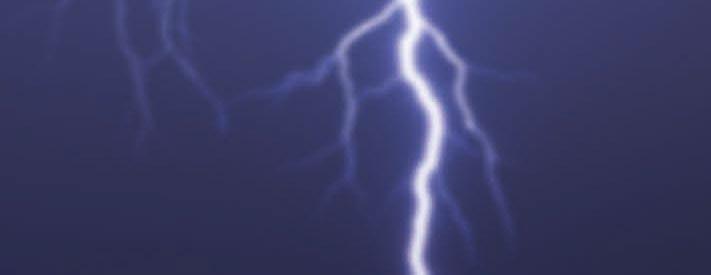
Company wants to supplant big names as podcast lovers’ go-to player

Finding interesting podcasts can be like shopping in an old-fashioned record store. There are millions of albums grouped by genre, but that’s it. Unless you know specifically what you’re looking for, you’re on your own.
The Fathom podcast platform, found online at fathom.fm, intends to change this. That’s because the Fathom podcast player uses artificial intelligence to help listeners find podcasts that really resonate with them.






“Most other podcast players treat podcasts more like music — a large, long audio file that’s played, paused or skipped,” explained Tyler Termini, Fathom’s product manager.

“Fathom uses AI to comprehend the ideas within podcasts, so listeners can confidently decide what to listen to next using personalized audio clips; use ‘x-ray vision’ for podcasts by being able to navigate chapters and transcripts derived from them; and search podcast content in detail.



“One of our fans described Fathom like ‘Netflix, but for podcasts.’ We appreciate this comparison, but it would only be 100% true if Netflix also provided users the ability to ‘search within’ movies like Fathom can search within podcasts, or let viewers create their own movie clips to share with others.”
A better job


Like Netflix, the Fathom podcast platform pays attention to the initial content its users select, using it and further selections to make podcast recommendations. However, Termini said, the AI-engine driving Fathom allows it to provide much more focused recommendations, along with empowering listeners to delve more deeply in their own searches.
“Due to the precision of Fathom’s assessment of what a listener actually listens to and likes, it’s able to surface the most relevant and interesting ‘clips’ from a podcast for

the listener. This makes the podcast discovery process far more relevant to users. Listening to a preview from the latest podcast you follow is a lot more interesting than just searching by name, as is finding relevant clips via search.”
Further, because Fathom is transcribing and “comprehending” podcasts, it knows a lot more than the broad ‘categories’ that a podcaster might have listed their podcast under.
“These are often inaccurate, since podcasters will leverage adding several superficial categories for marketing purposes.”
AI as a game-changer
In today’s world, AI is becoming an integral element of data processing. In aviation, AI is being used to create digital twins of jet engines, with every change detected in the real engine being added to its virtual sibling. In this way, mechanics can troubleshoot and remedy anomalies in the real engine as soon as they occur, by tinkering with the digital twin to see what works and what doesn’t.
AI is being used by law enforcement to search and analyze everything from surveillance video to vehicle license plates caught by patrol car cameras. In this latter instance, the AI compares the license plate numbers to the department’s database of stolen and wanted vehicles. In seconds, the system can tell patrol officers if the car ahead of them is indeed wanted, and direct them to apprehend it. This is proving to be a much more effective and efficient way to detect and stop stolen/wanted vehicles than by having officers do it on their own.
Given how well AI is performing in other industries, it makes sense to apply it to a data-based application like podcast selection.
“Using AI to comprehend the content within podcasts for recommendation and curation allows listeners to more accurately target specific ideas or conversation topics, as opposed to just listening to ‘what others are listening to,’ although this will always play some role, including
The Pitch Fathom promises to help users “discover podcasts at the speed of thought with mind-blowing AIpowered Search, Transcripts, Chapters, Clipping and Highlights.”
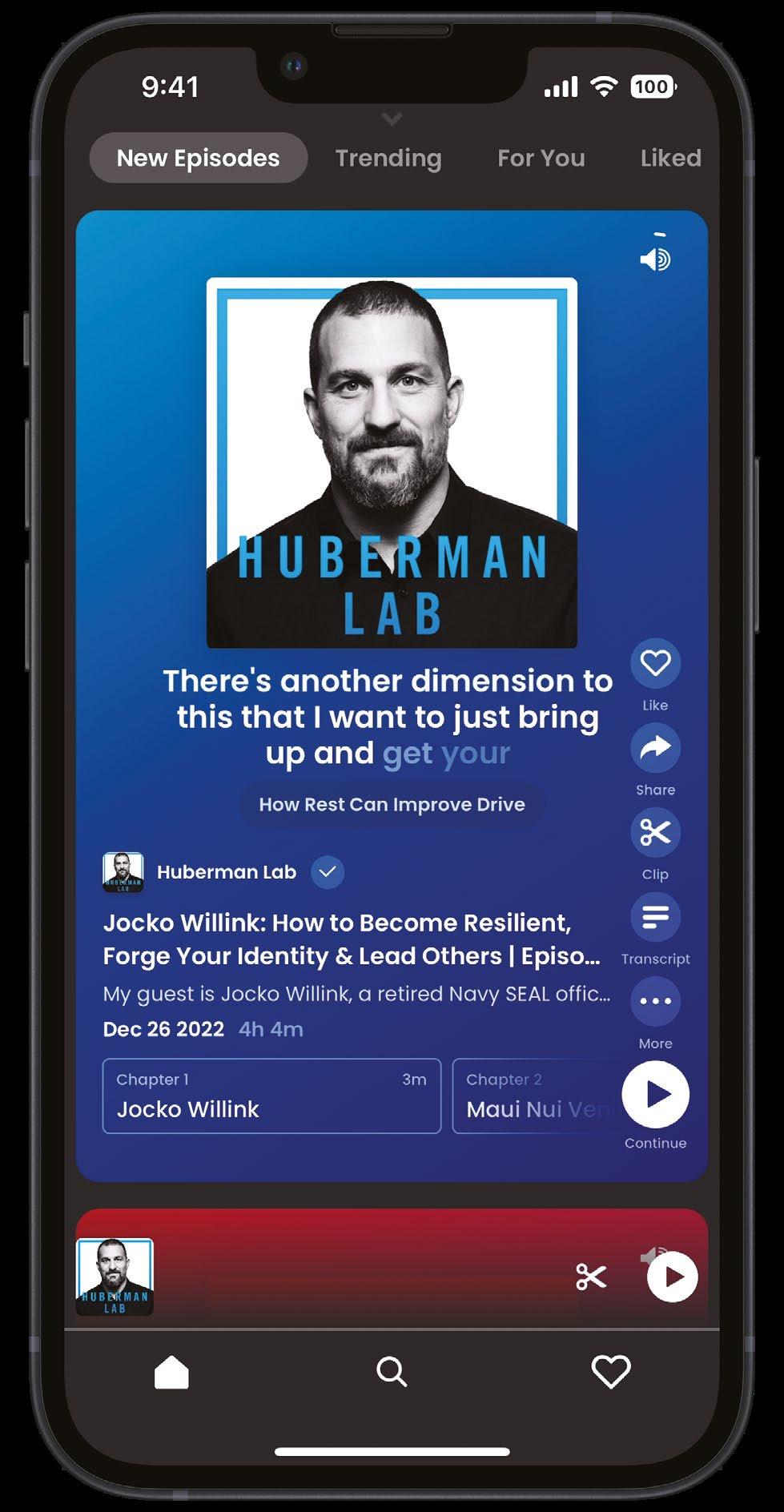
Right Fathom users can listen to a curated feed of highlights from podcasts they follow
within Fathom,” Termini said. “This makes podcast recommendations in Fathom far more relevant than any other podcast experiences.”
Big ambitions
The AI-enabled Fathom podcast platform has big ambitions.
“Fathom seeks to fully replace Apple Podcasts, Spotify, YouTube and others as a podcast lover’s go-to player,” said Termini.
Is this hubris? By using AI at the heart of its podcast recommendation, search and selection process, Fathom is doing far more than other platforms that simply view podcasts as another form of music-like content. If the company gets a break and podcasters and fans discover its enhanced capabilities en masse, maybe Termini’s words will bome true.
After all, doing something better is what helped Netflix’s on demand/online videos replace Blockbuster’s videotape/
“ At Fathom, our mission is to bring the same power that humans have over text, to audio. Audio conversations should be just as dissect-able and extensible as text.
“
Left









Using natural language, the user can search within a specific podcast, or “across the podcast universe.”



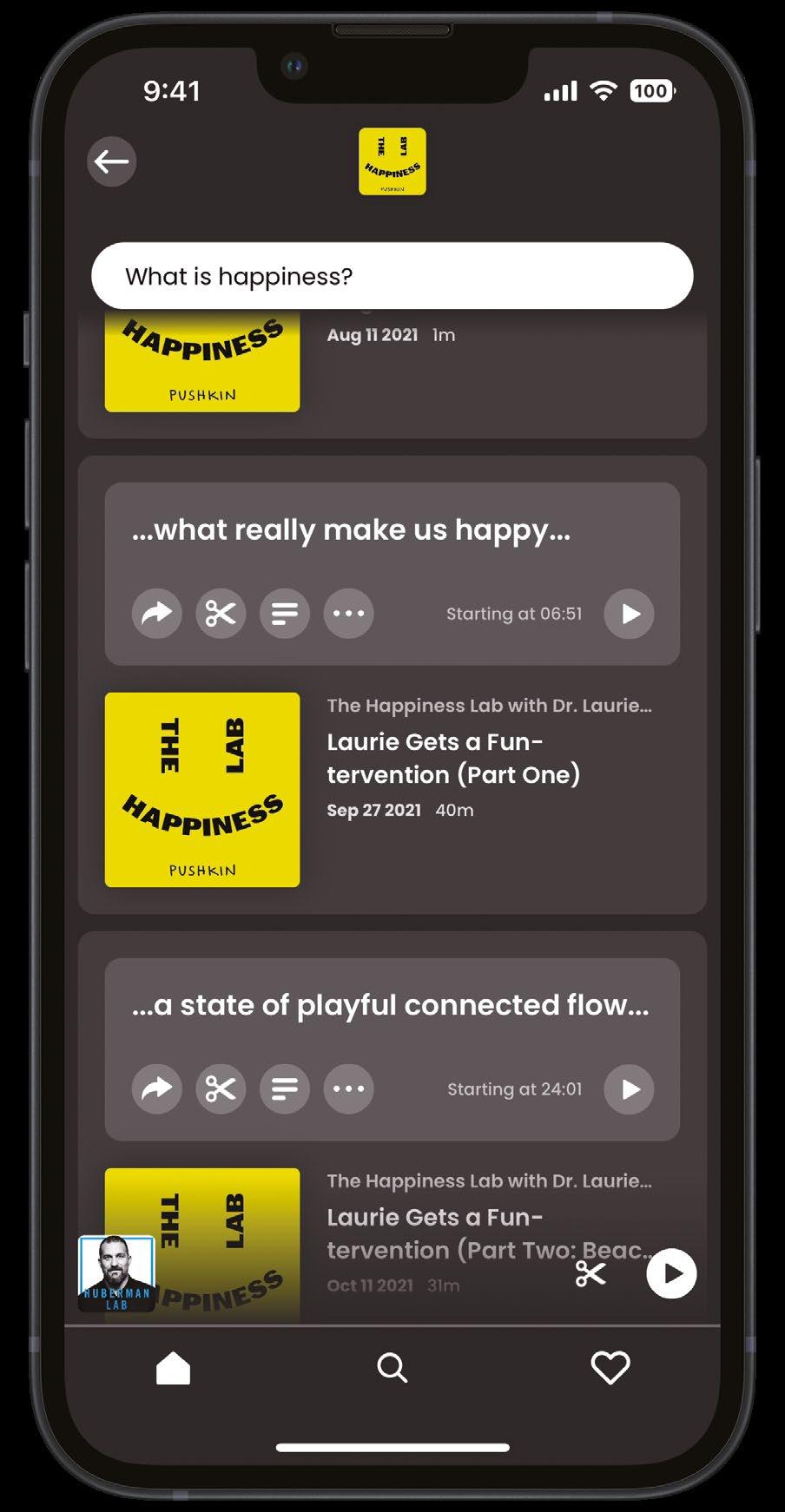
Most other podcast players treat podcasts more like music.”
DVD rentals, and Apple’s touchscreen iPhones to dethrone BlackBerry’s smartphones with physical keyboards. (This writer makes that last statement with a pang of regret, since he owned every generation of BlackBerry from the initial two-line pager to the final BlackBerry Motion touchscreen, which he still uses.)
So maybe the possibility of Fathom overthrowing today’s most popular podcast platforms should not be dismissed.
“AI will be the primary tool by which listeners hone in on the podcasts that matter the most to them, and that are of the highest quality,” Termini said.

“Until these AI tools and infrastructure become as accessible as a weekend carpenter’s tools, solutions like Fathom will be the go-to solution for the everyday podcast listener.”
In the meantime, the company is working to make its AI-enabled podcast platform more powerful and appealing. “Fathom 2.0 has already been launched and is available on the Apple App Store as ‘Fathom Podcast Player,’” Termini said.
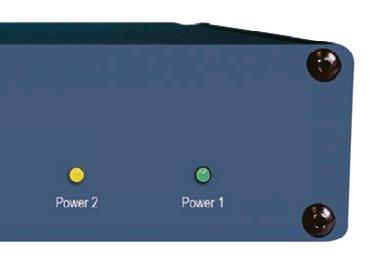
Security considerations with cloud infrastructure
The following is an excerpt of an interview with Bill Bennett, media solutions and account manager for ENCO Systems Inc., from the free ebook “Cloud/IP-Based Content Creation & Delivery.” It is available at radioworld.com/ebooks.
Can the cloud ever be fully secure?
Bill Bennett: How often do you hear about on-prem “island” software environments being victimized by viruses from a USB stick or a bad actor? Those systems have no internet access at all. So even if you have no internet connectivity, you have to worry about those vectors.

That said, the cloud opens more opportunities for things to go wrong, which requires IT-centric security protocols.
That includes highly granular user-level permissions. If somebody leaves the company, you can close their account that day without affecting anyone else in the company. You also need lots of encryption in both directions constantly applied over the network. Multifactor authentication is very helpful, a step beyond passwords.
For VPN software, make sure you’re using a legitimate and well-


regarded service. Also use robust logging and monitoring of the hardware and routers at both ends; if something does go wrong, you can look back and see how bad it was. It’s unfortunate to talk about a problem after the fact, but the more data you have, the better you can prepare for next time.


Certainly, you should also have more than one internet service provider for redundancy. If an ISP link to your studios goes down, you have another brand name to get to your servers.
This is getting beyond security into reliability. If you’re playing from the cloud and you have a transmitter, you want to have an IP link to your transmitter site; that should also have a redundant path, a different network provider. You also want redundant IT gear within the facility, in case your router goes down — even if you have two ISPs connected to it but all the sudden you have no router in your plant.
Try to imagine any piece along the path failing — your router, a power supply, cabling. It’s not always a big-ticket item, sometimes it’s the most mundane of equipment. A UPS going down, it happens, luckily not too often. But what would work to fill that gap?




ChatGPT didn’t write this
Explore AI’s new frontier while applying a dose of caution
As futurists and journalists publish their pieces about ChatGPT, I devour the details while, deep inside, I reserve a modicum of healthy skepticism.
Like you, I’ve played with ChatGPT for hours, and it really does seem to be the next big leap in the information age. Microsoft’s Bing appears poised — finally! — to compete with Google Search, which is a minor miracle in itself. However, rather than attempt to predict the impact, I’d like to take a look at how radio can connect to this technology now, in the moment.

Chat through artificial intelligence is such a compelling topic for 2023, a key subject for your on-air staff to talk about and to use as a tool to entertain and inform your audience. Morning-show producers should be creating regular segments that utilize this AI for amusement and enlightenment. Combine it with voice AI, or use a text
reader to deliver AI results.

We already know that ChatGPT can write songs, poetry and give advice. Music trivia is fast, fun and fairly accurate.
Then there’s a pile of other uses, starting with so many questions about adaptability!
Will we soon be able to generate a script for a reliable local newscast? If so, will we be violating copyright? Would an artificial co-host of a morning show be a cool stunt — or a new team member? Is talk radio ready for a segment hosted by opinionated artificial intelligence? Or will that voice use racist, misogynist or other horrible material easily found on the internet?
This is a new frontier ready to be explored now, but possibly discarded as it becomes commonplace, disliked or shown to be consistently unreliable.
While the ChatGPT I’ve played with is not ready to write full promos, put together guest lists for shows or reliably suggest hot topics for discussion, it can function as a quick idea-generator for talent and producers in creative mode. Important note: I had ChatGPT write morning-show promos and they came out generic because the bot couldn’t find specifics on my test station’s website. Poor data in equals the same thing out. As listeners use AI for their own answers, remember to keep your website information accurate and updated consistently, so bots can deliver precise information.
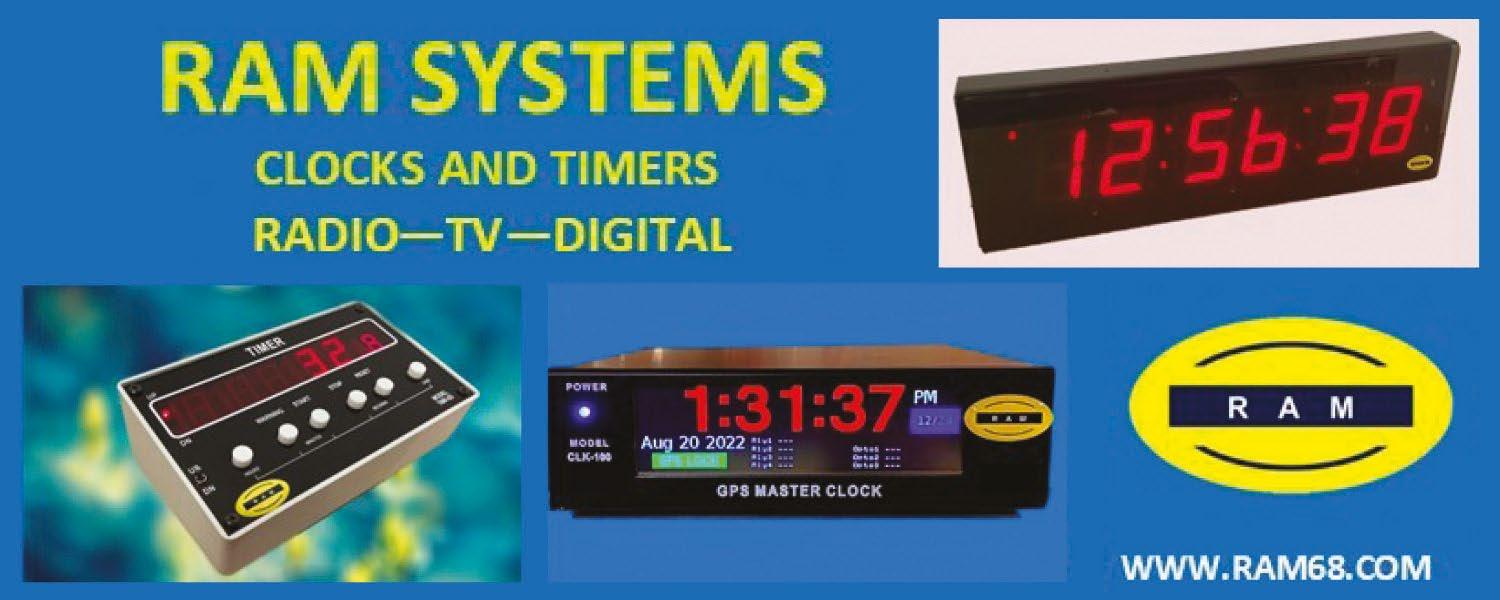
The company Radio Workflow is already using AI to write advertising copy for radio. By the time you read this, perhaps there will be an AI company offering engineering solutions to help with repair, installations, maintenance and more.




Of course there is an ugly side. The New York Times had this from Gordon Crovitz, co-chief of Newsguard: “Crafting a false narrative can now be done at dramatic scale, and much more frequently — it’s like having AI agents contributing to disinformation.”

And what does ChatGPT think of itself? The response: “As an A.I. language model, I do not have personal opinions or emotions. I am designed to provide helpful and accurate information to assist with answering questions and generating text. My abilities are limited to what I have been trained on and do not extend to self-reflection.”

Thank YOU, Mr. Spock. … Or should that be Lieutenant Commander Data?
As always, drop me an email and let me know what you think to marklapidus1@gmail.com



Growing Up Gates
Hello, I just wanted to express my thanks for the nice piece you published by Brian Galante on the history of Gates Radio, based in Quincy, Ill. (“Gates Air’s 100 Years of History in Pictures”). That article was a sequel to your photo essay compiled by John Schneider, published a decade ago, “Remembering the Gates Radio Company,” which marked the sale of Harris Corp.’s Broadcast Division.
My dad was Norbert (Nibs) Jochem. He was a member of the management team at Gates for many years. He is pictured in a couple of the photos in these articles. Other Gates execs pictured were frequent guests at the house and their names are all familiar to me.
I grew up in a household that smelled of soldering smoke, surrounded by all varieties of audio equipment. It seemed he was always tinkering with something: rebuilding a radio, assembling a Heathkit project, etc.
The pictures of the various office locations of Gates Radio in Quincy are great too. There’s one of 123 Hampshire Street that really brings back memories. I used to tag along with my dad when he went back to work in the evening or over a weekend and I roamed all through that building when I was in grade school and middle school. The photo shows an entry

door with cars parked nearby and I remember that one of those parking spots had a sign showing that the space was reserved for Norbert Jochem. That was a point of pride for me as a kid!
When I was in eighth grade I dazzled everyone with a Tesla coil that produced impressive arcs of electricity and smelled up the room with ozone — we (mostly my dad) built it at the 123 Hampshire Street facility, seemingly with materials he scrounged up from the production areas.
I also remember going with my father to the antenna farms on either side of the Mississippi River and it seemed I was always hearing about the VOA project. I recall that we were treated to a VIP tour of VOA facilities when we visited Washington D.C.
My dad traveled quite a bit for the company. This was in the 1960s, before business travel was common, and he had a habit of bringing home a swizzle stick from every flight he’d been on while traveling for Gates. I’ve now got quite the swizzle stick collection. I guess he liked his gin and tonics while flying.
I’ve got a box of Gates memorabilia — company newsletters, a scrapbook given to my dad upon his retirement, etc. Seeing your article will prompt me to dig out the box and reminisce. Thanks so much for the stories.
John D. Jochem, Psy.D. Clinical Psychologist Above The author recalls that his father, Nibs Jochem, had his own parking space at 123 Hampshire St. Photo courtesy Janet Gates Conover.600-Ohm Musing
Regarding Mark Persons’ article “Let’s Talk About Some Basics of Audio for Radio” in the Feb. 1 issue: Mark, some questions regarding 600-ohm termination:


1. Do I understand you to say that with modern transformerless equipment, it is not necessary to have 600-ohm terminations? Does it make a difference if there is a long run of wire to the destination?
2. With legacy equipment that has an actual 600-ohm output, will a 600-ohm termination reduce the voltage by half? Is the VU meter calibrated assuming a 600-ohm load?
3. When setting levels, is it less critical if there is compression between the studio and the transmitter?
Kenneth LundgrenAuthor Mark Persons replies:
Kenneth, transformerless equipment does not require a termination to keep audio frequency response flat.
A long run of cable is more difficult if it is more than several hundred feet. In that case, likely a termination should be used. VU meters on transformer output equipment are calibrated based on a proper termination. Yes, the audio is higher without a termination.
Best to set all levels within a few dB so the audio processing does not need to work as hard to maintain the correct level. If the audio processor sees a much higher level when a new source is connected, audio distortion might result during the first second it is on.
Conversely, a lower audio source will sound low until the processing catches up. Listeners hear those less than great
A General, Not a First
How
Re the recent letters about FCC licenses:
Following the demise of the First Class Radiotelephone License, there was a brief period of time when the holder of a First Phone License could have it replaced with a General Radiotelephone Operators License, as contrasted with later issuances of General Radiotelephone Certificates. See the attached image of my General Radiotelephone Operators License, which replaced my First Phone.
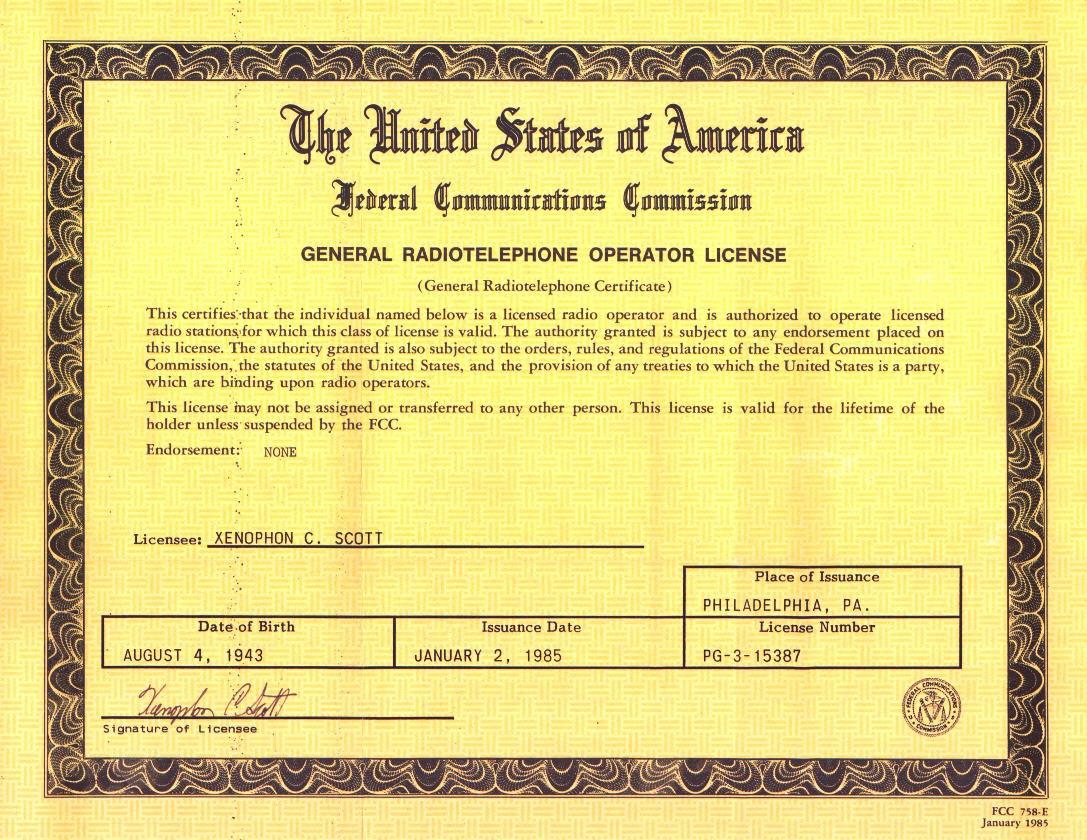 Xen Scott
Xen Scott
OK, Now What?
Re “Auto Industry Non-Committal to Keeping AM in New
Man, the work I did with General Motors years ago, to show them that AM was worth keeping … So what will the commission do about the translators tied to AM stations that will no longer be received in cars? Will they allow licensees to turn off the AM and keep the translator going? Widespread HD adoption isn’t enough to keep this
Jonathon R. Yinger President/CEO The Christian Broadcasting System & Broadcast Properties LLC

